Well, here’s another lengthy post as I continue work through content from this past season. This year turned out to be quite a bit different than seasons past. While I still spent time fishing my usual haunts, especially for the major hatches, I spent considerably more time than usual fishing different rivers (and lakes), in different ways. Below is a recap of much of my 2022 trout season, roughly organized by time of year.
Early Season: Brookies & Backcountry
As is typical for me, opening week and most of May was spent pursuing Ontario’s jewel of the north: Brook Trout. This is the time of year when the water is the cold and high – a perfect combination for fishing brook trout. While there’s certainly a group of likeminded anglers out there with the same idea, the vast majority of them are either fishing the tail end of spring steelhead, or off to their favorite Brown Trout rivers.
I fished mostly smaller streams for brookies this year (not including Algonquin). In fact, I may not have made a single trip to the Credit for brookies all season, which I think is a first for me. Regardless what I’m chasing, I always go out of my way to escape the crowds – and I managed to do just that.
These first few small stream outings produced some unusually colorful little brookies for early season, which was a real treat. I especially enjoy the very different coloration from different streams and habitats – brookies, more than any other trout, seem to really adapt their colors to the water they’re living in. Fishing with a 2 or 3 weight, they’re always a joy to catch.
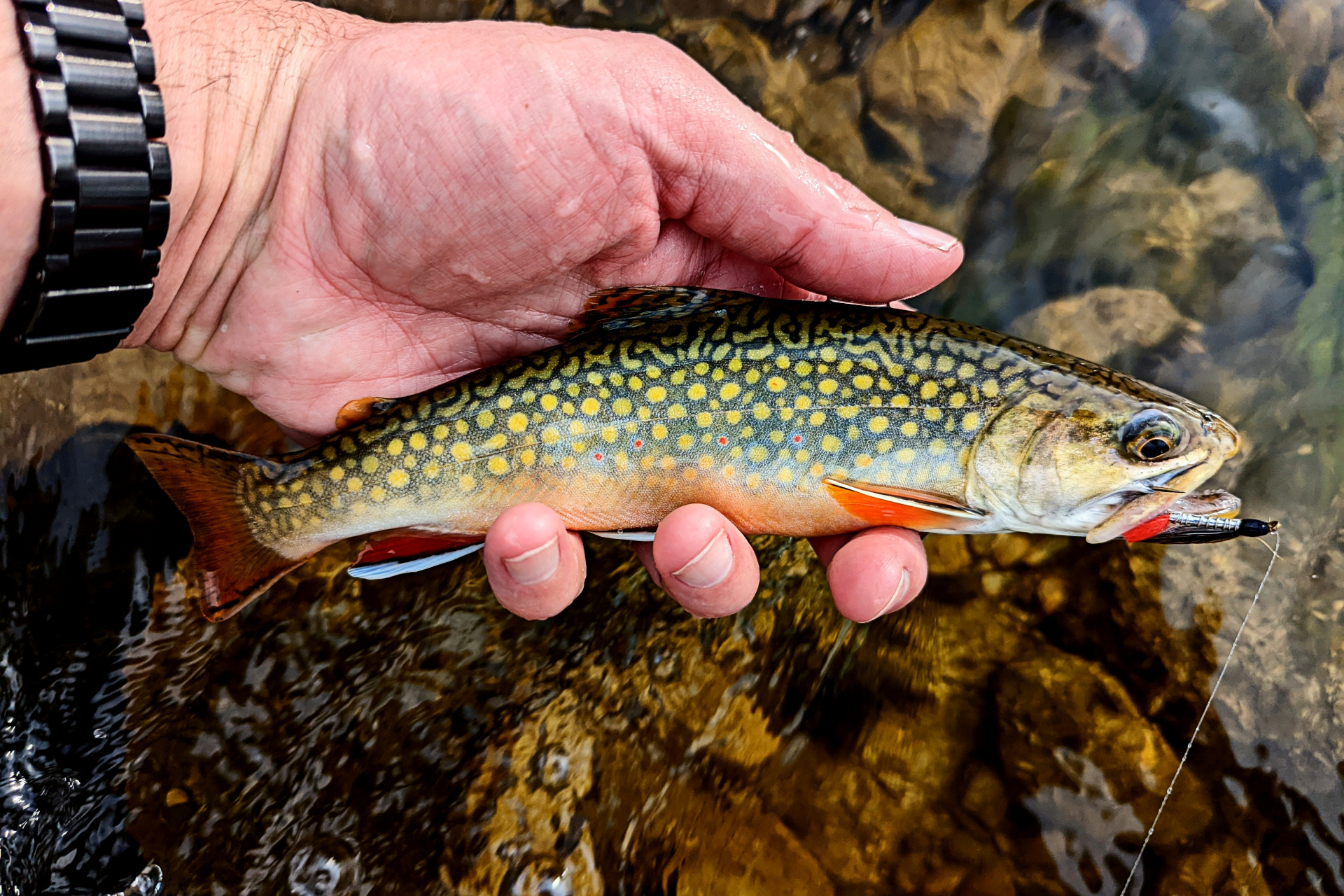
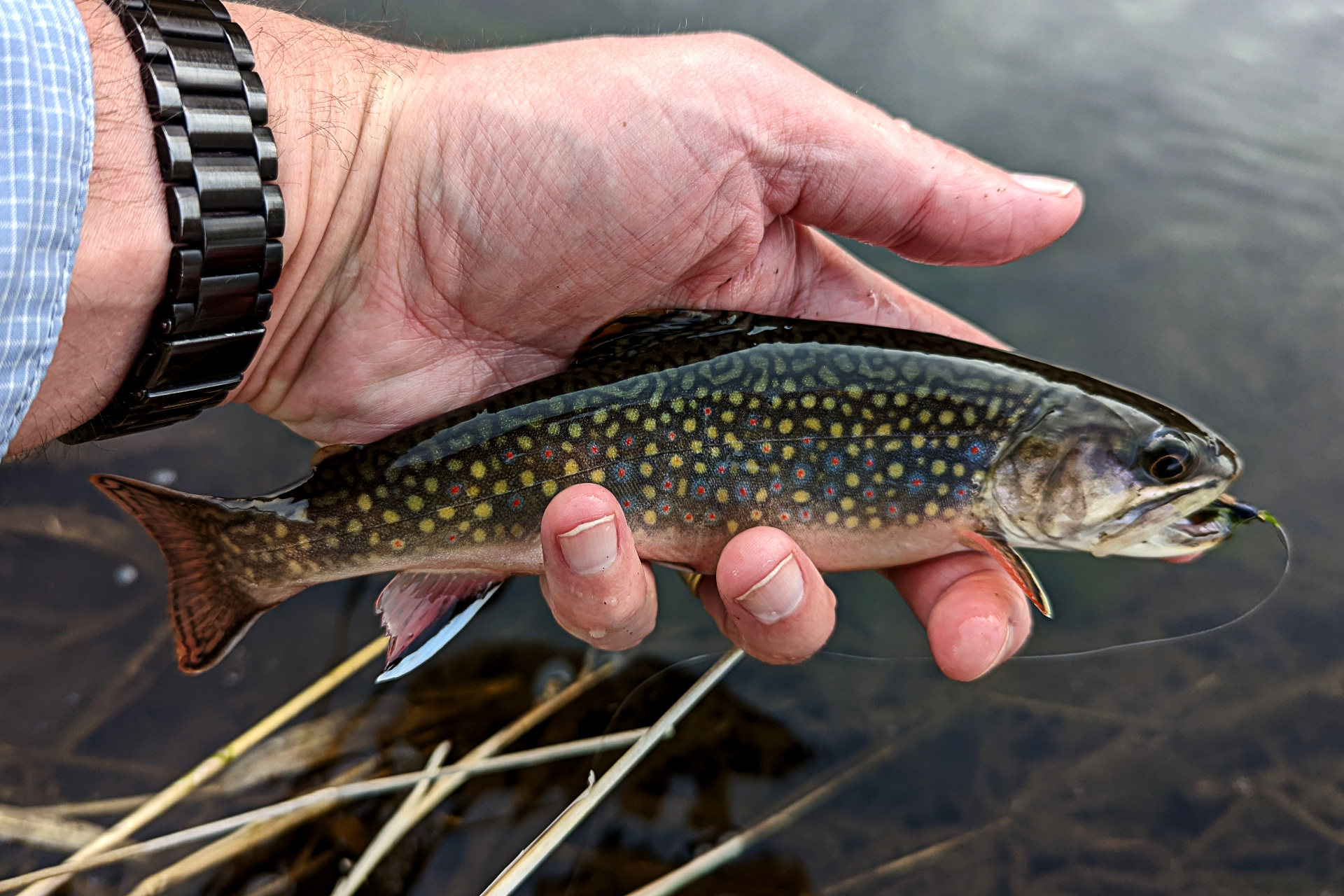
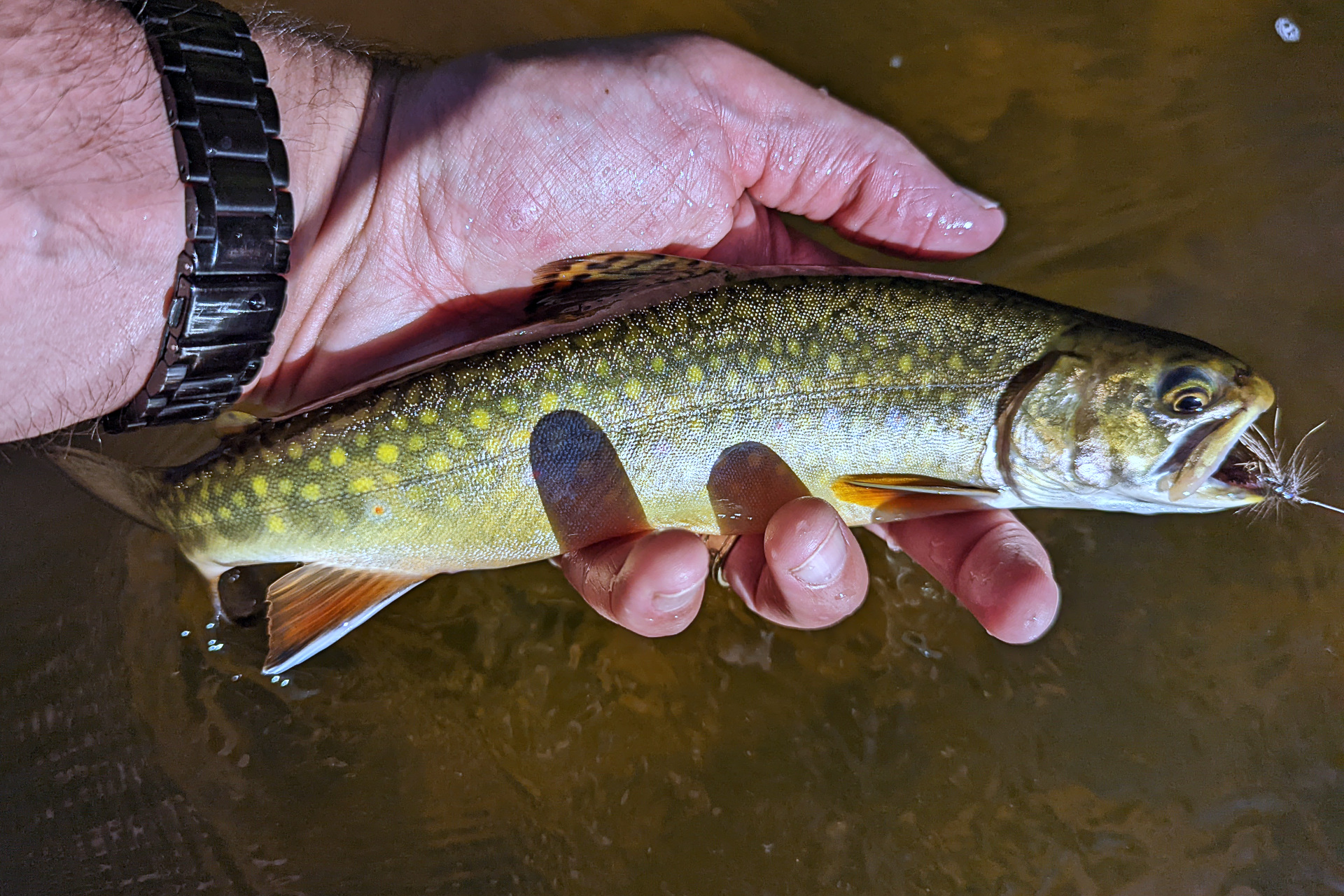
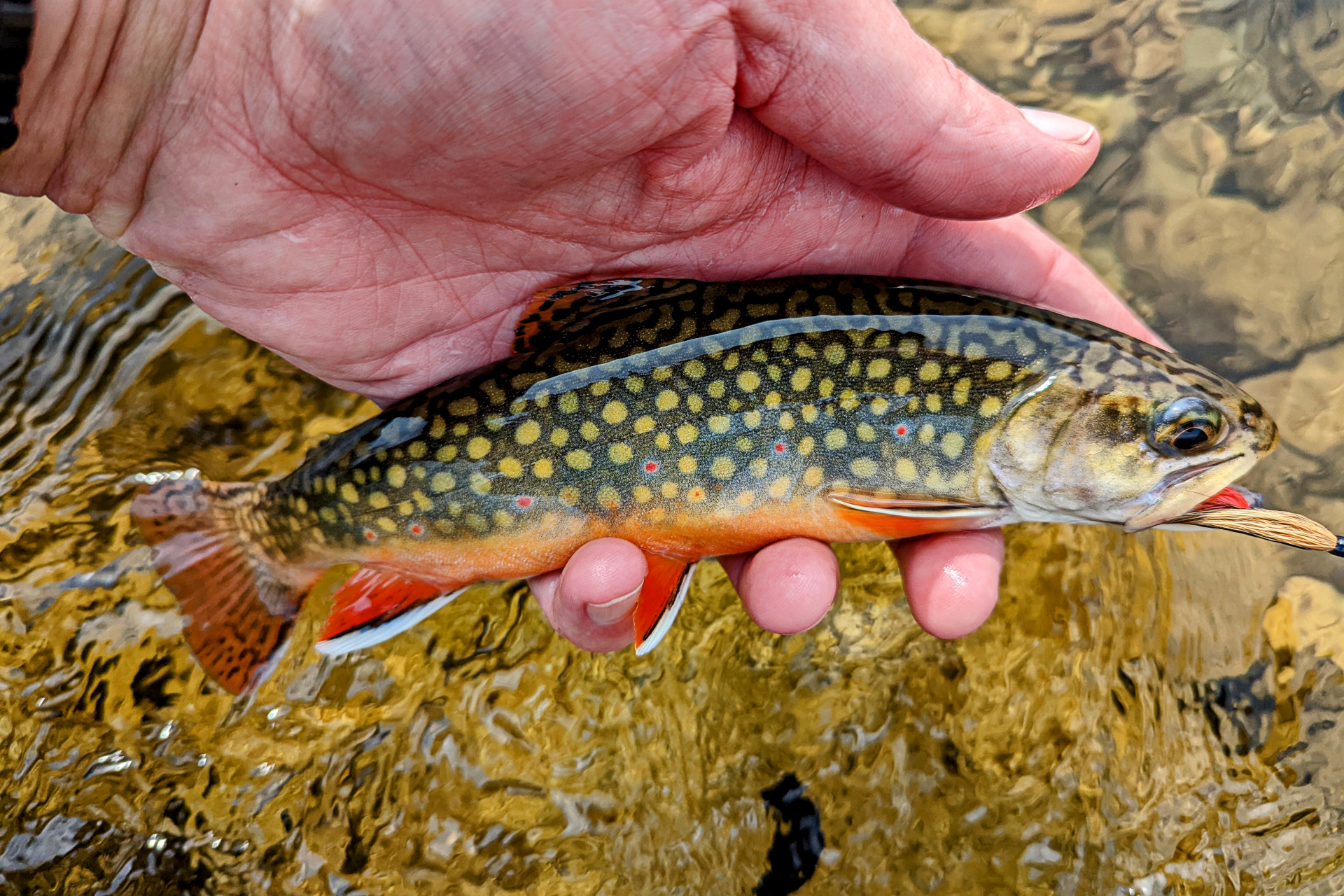
Aside from whetting my appetite with the aforementioned local brook trout outings, the majority of my time leading up to trout opener – and the several weeks after it – were actually taken up from an absurd amount of planning and preparation (and finally, travel) for my first solo Algonquin backcountry trip. This was also focused on Brook Trout, but it included close to 100 km of travel via canoe + portages over a period of 6 days.
I’ve already posted a full separate report on that trip, so check it out here if you’re in the mood for another long read. Below is one of the brookies from that trip.
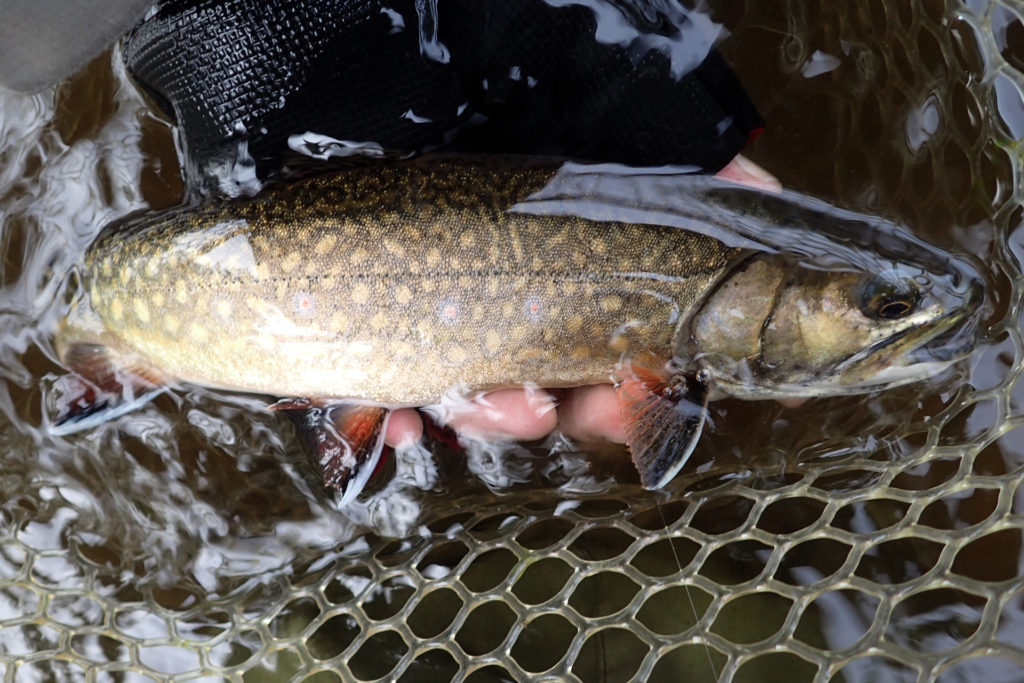
Early to Mid Season: The Usual
After my mid-May Algonquin trip, I found myself back home just in time for some prime hatches – such as the Green Drakes and Grey Foxes. It’s been a tradition to hit the river almost every day during the green drake hatch. They tend to come and go in cycles – mostly whether and water dependent – so each new season is always a surprise (or potential let down).
The drakes are always intermixed with foxes as well, often quite heavily – so it’s wise to carry a selection of both files. There’s been several occasions where I was overly focused on fishing the larger green drakes (among a fairly thick hatch of them), only to be snubbed by some extremely selective trout. Often, upon switching to a Grey Fox, I’d end up hooking into a trout almost immediately.
The hatch was no bust this year – at least from a bug numbers perspective. They were in good numbers, especially throughout the more upper stretches of the Credit River.
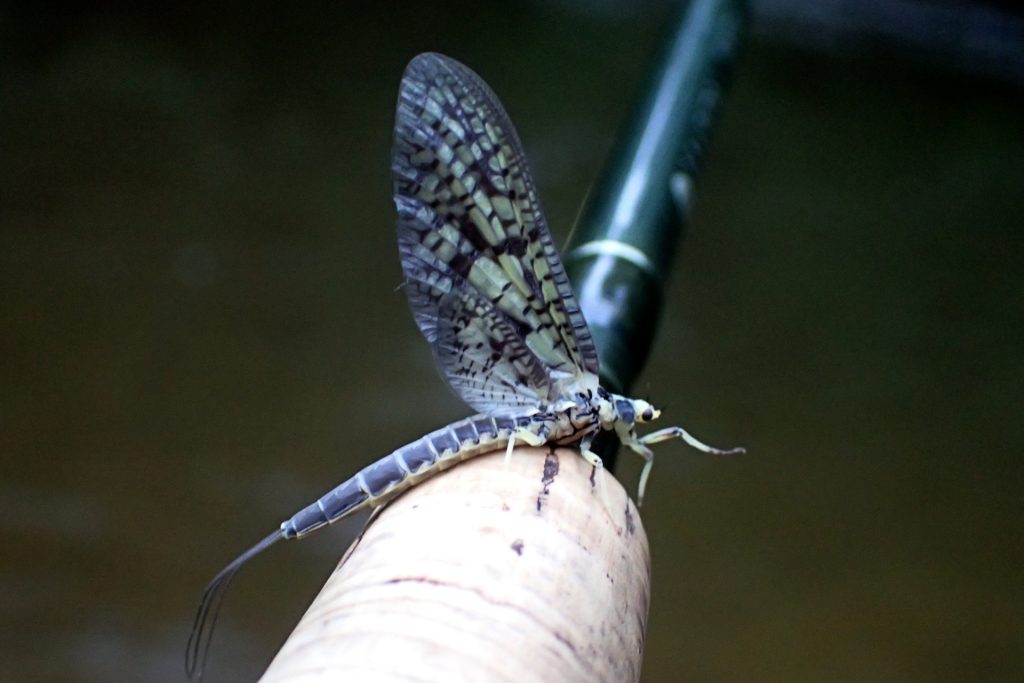
As great as the fishing could be during this hatch, there is typically a very small window when the spinners (Coffin Flies – which are white and black as opposed to the yellow/green color of the duns) are falling – and this is when you want to be on the water.
I managed but a single larger brown during the drake hatches – with the rest of my fish being either smaller browns, or rainbows.
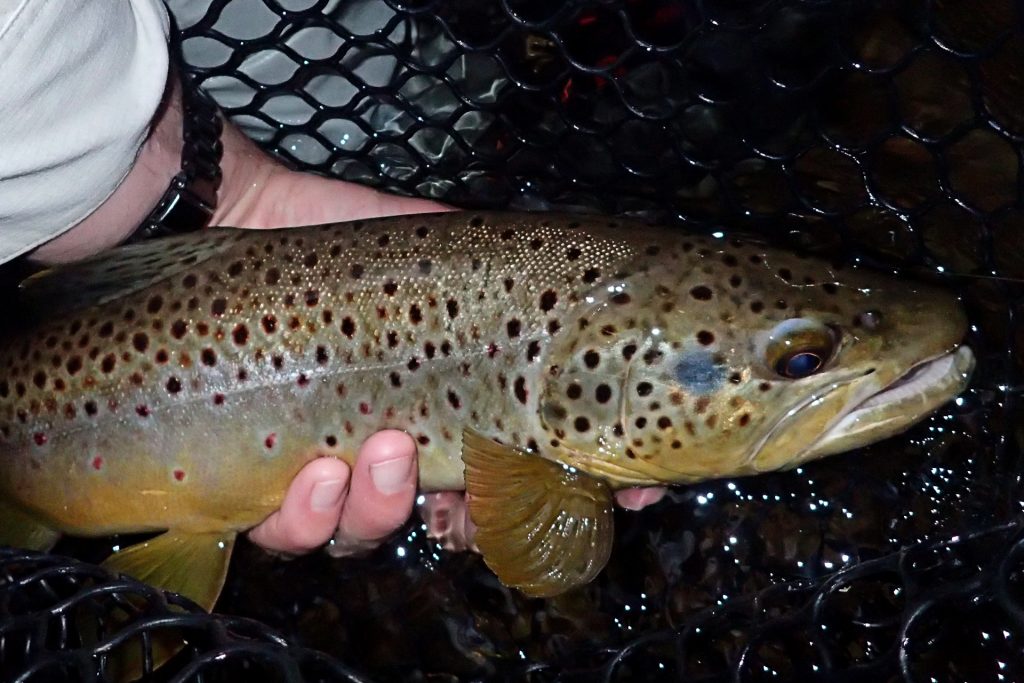
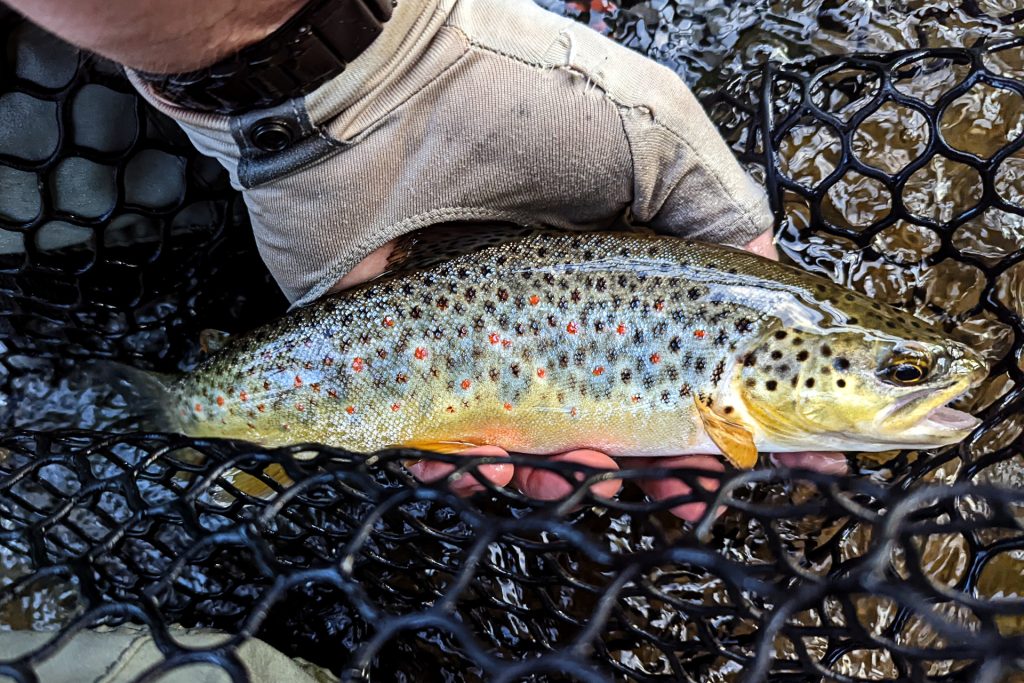
Most of my fish were caught on a new green drake spinner that I experimented with this year (using some materials that have sat almost entirely unused for years). My normal go-to is a foam body fly that floats like a cork – this one is pretty much the exact opposite. It seemed to do the trick, but getting it to float well is something of an accomplishment.
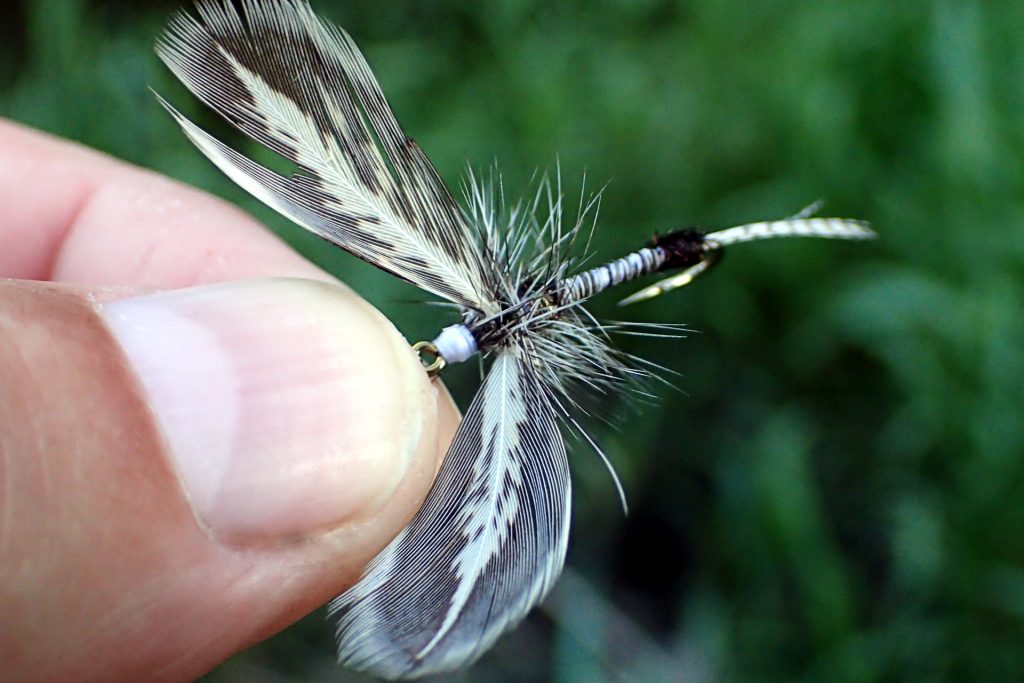
Back to those rainbows though… I’m not sure what’s going on with the Credit, but the number of rainbows is absolutely skyrocketing. I probably caught 2 rainbows for every brown or brookie this year. As my buddy rightly pointed out, there’s no way they’re naturally reproducing here (at least not in any numbers) – because neither of us have ever hooked a smaller / yearling rainbow. They all seem to be around the same size, so they’re likely escaping a fish farm, or being dumped there. The first rainbow below was actually caught on two consecutive nights – on the same fly.
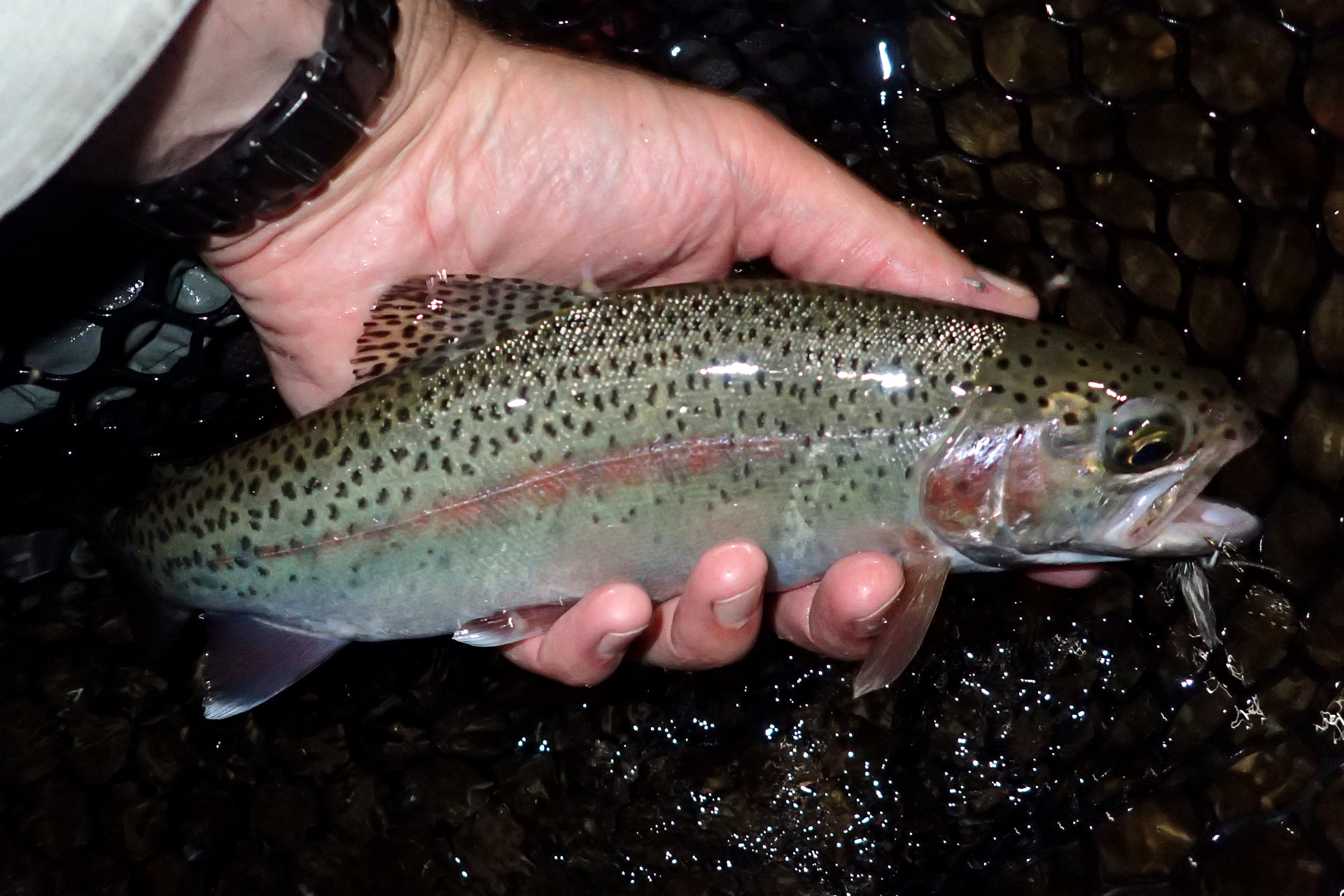
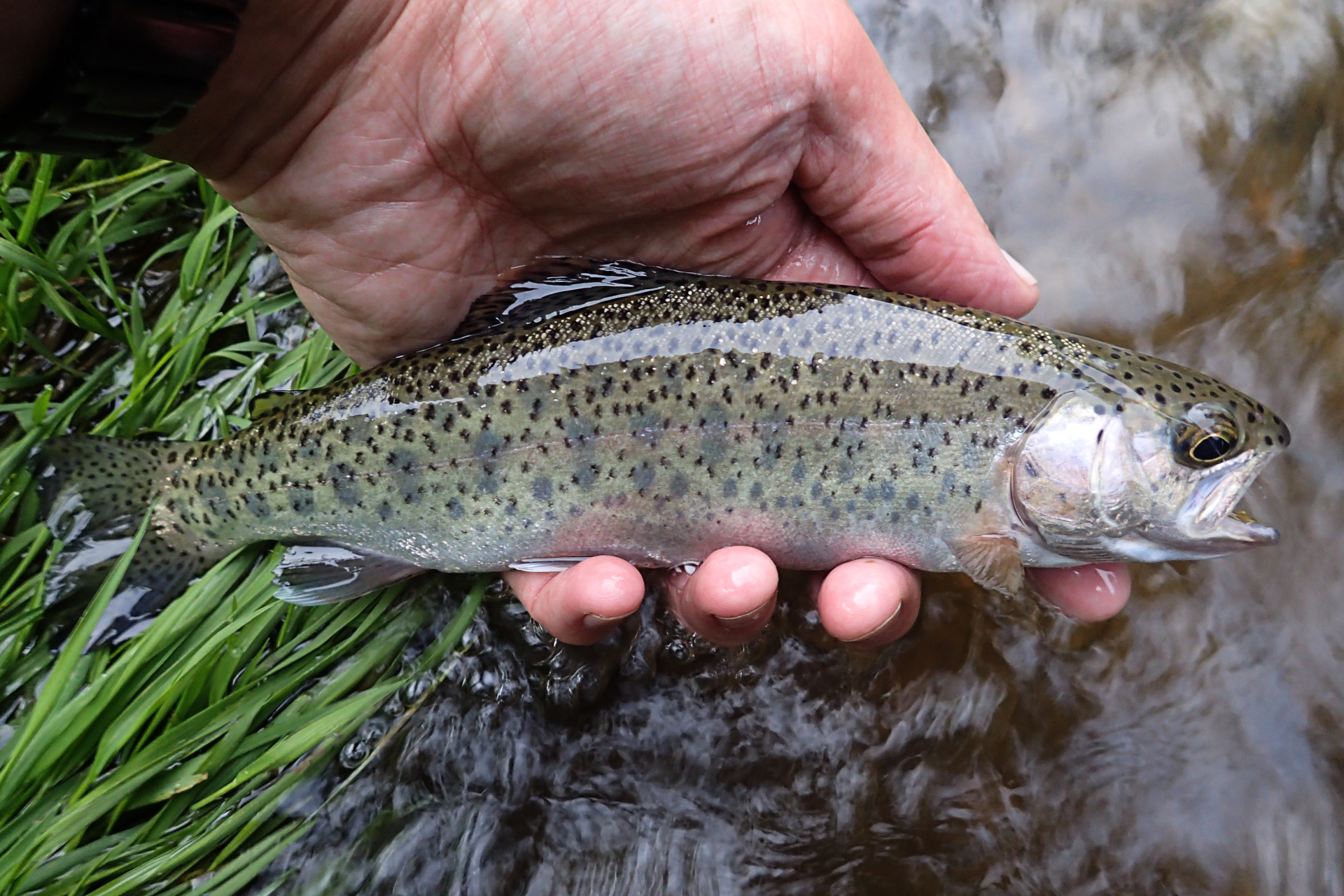
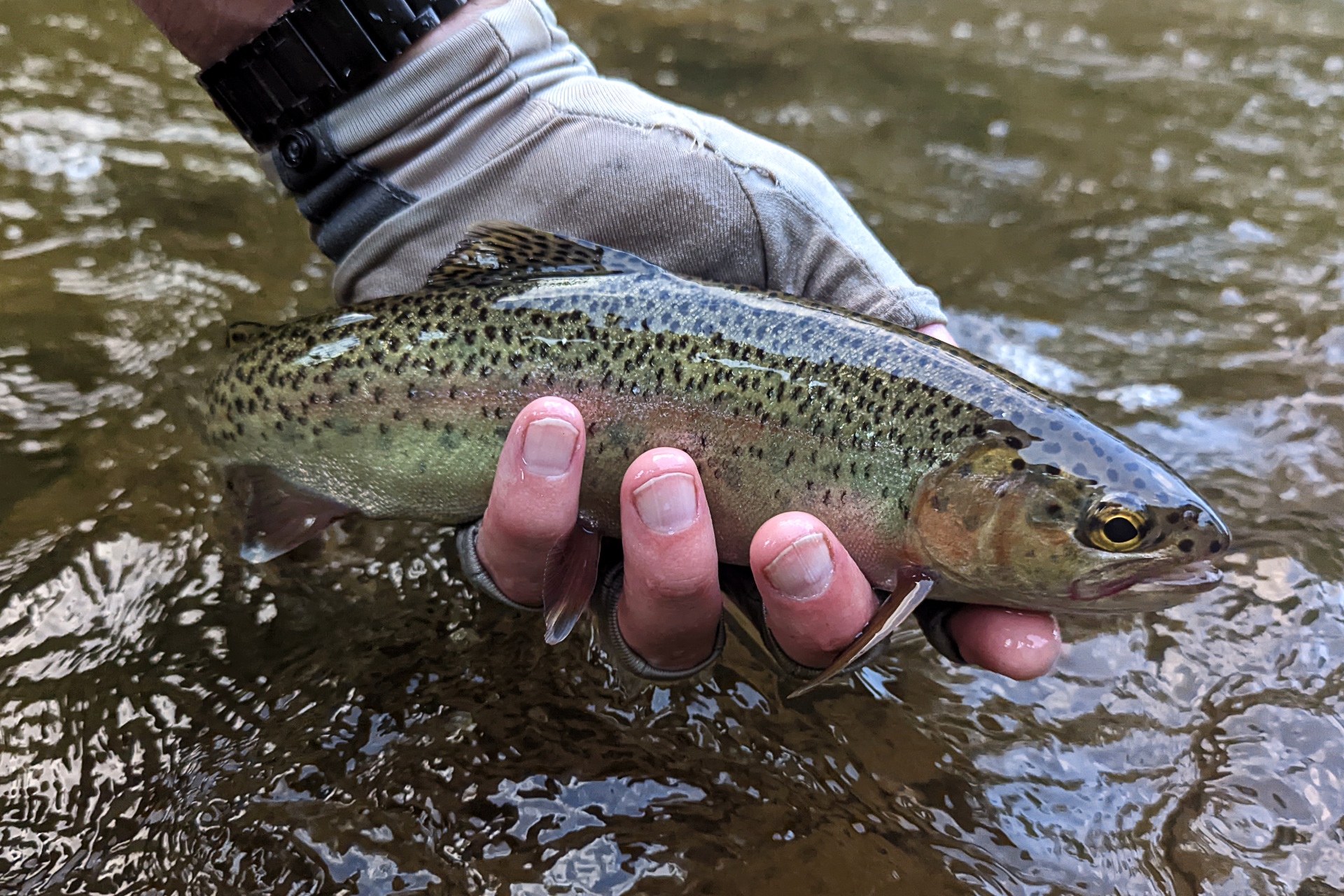
Mid Season: Lots of Travel and Dry Flies
The end of the green drakes and foxes takes us into mid June – which is Isonychia and Stonefly season on many southern Ontario rivers. The Grand doesn’t really fall into the same bucket, being the tailwater that it is – it’s hatches are fairly different (when in doubt, it’s caddis time on the Grand).
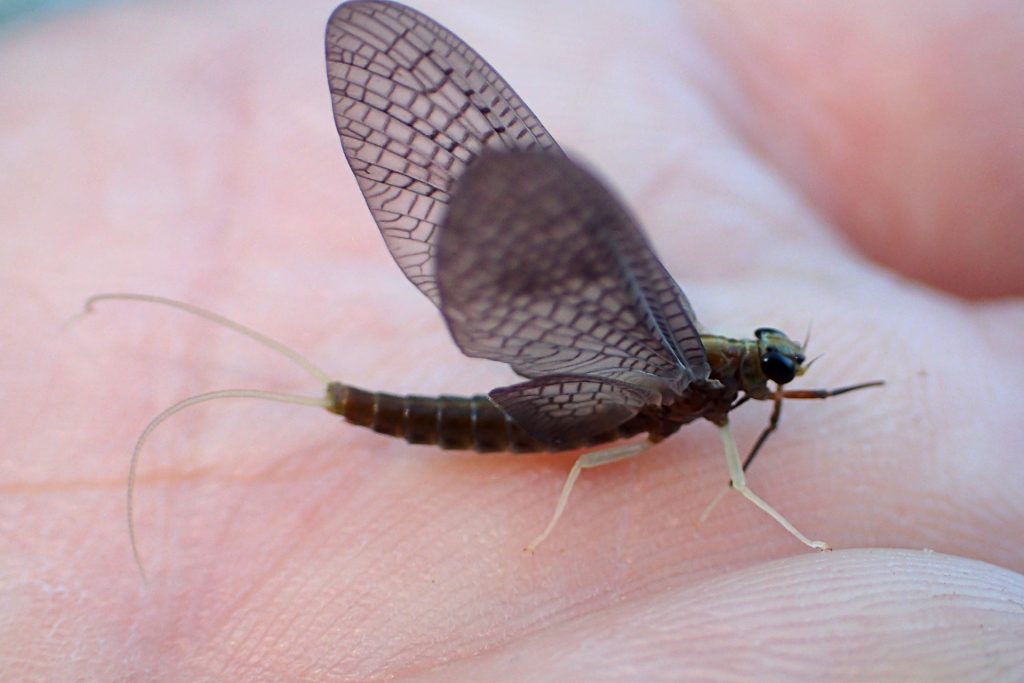
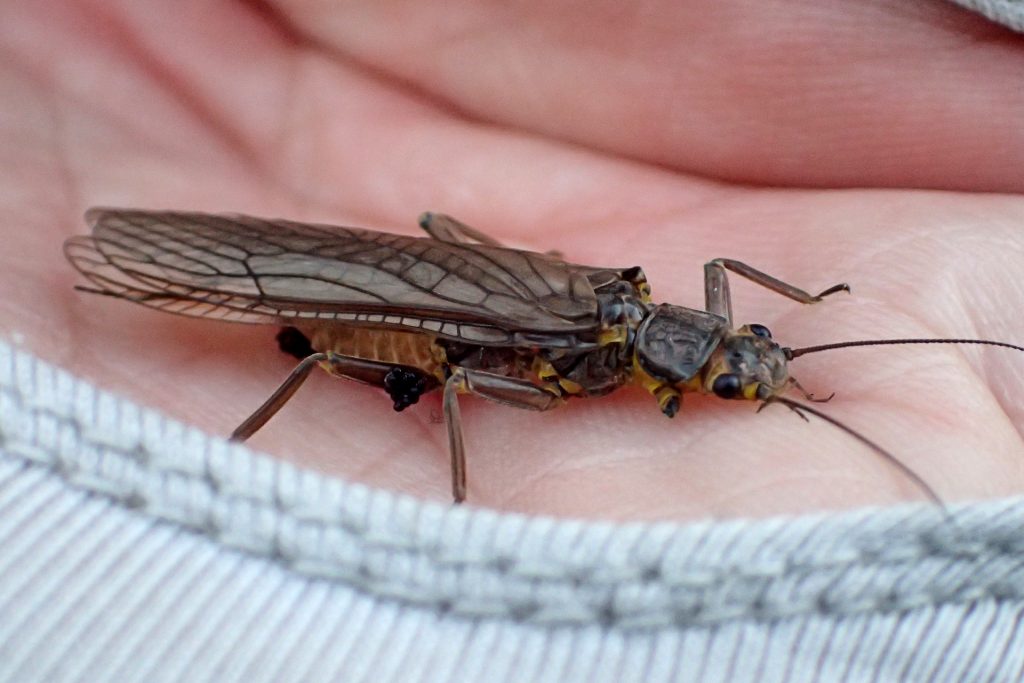
With regards to the Isonychia, I came up with a fly pattern a few years ago that I often use to fish the Isonychia hatches (though, I fish it in other scenarios as well). I’m not even sure if it’s a natural/imitation or attractor at this point, as it sort of morphed into something in between. But one thing’s for sure – it’s been a real trophy getter for me. I’ve taken more large browns on this one dry fly than I have any other. My buddies have been asking for the recipe and perhaps I’ll post it up on my blog this year. I don’t consider it much of a secret, because you know how fly patterns go – 80% of their success comes down to your confidence in fishing them!
With some acceptable water levels still gracing most of our rivers, I began to diversify where I was fishing. It meant lots of long drives – often driving for hours for the same or less amount of time fishing. This paid off though, as these weeks in June saw some of my best resident brown trout fishing of the season. I wouldn’t call it spectacular, but persistence paid off with some memorable dry fly takes (most with the above mentioned fly).
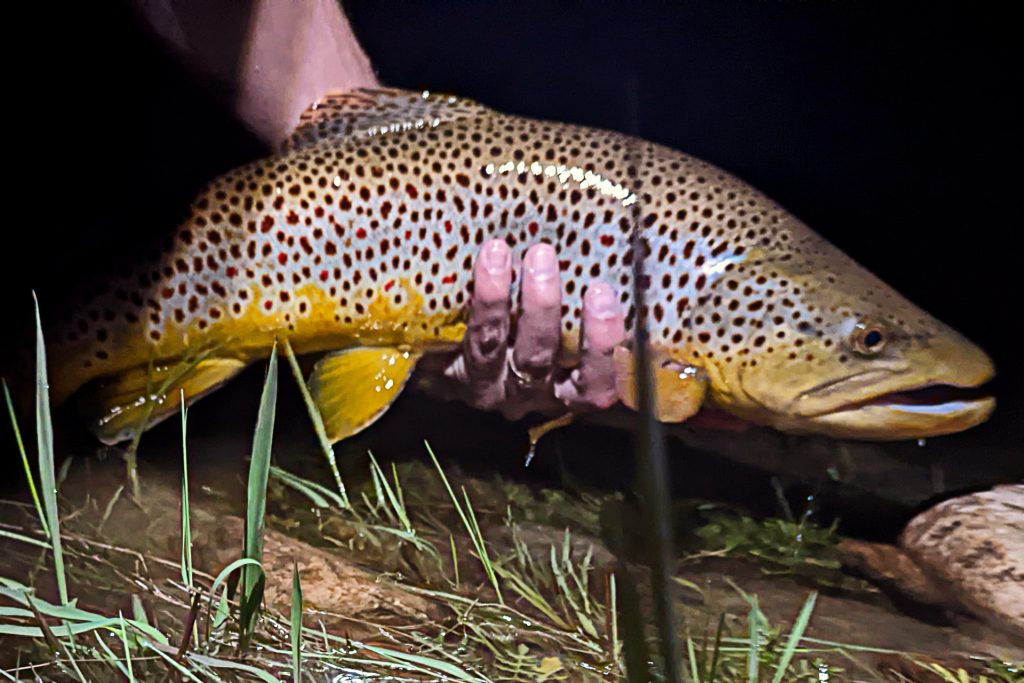
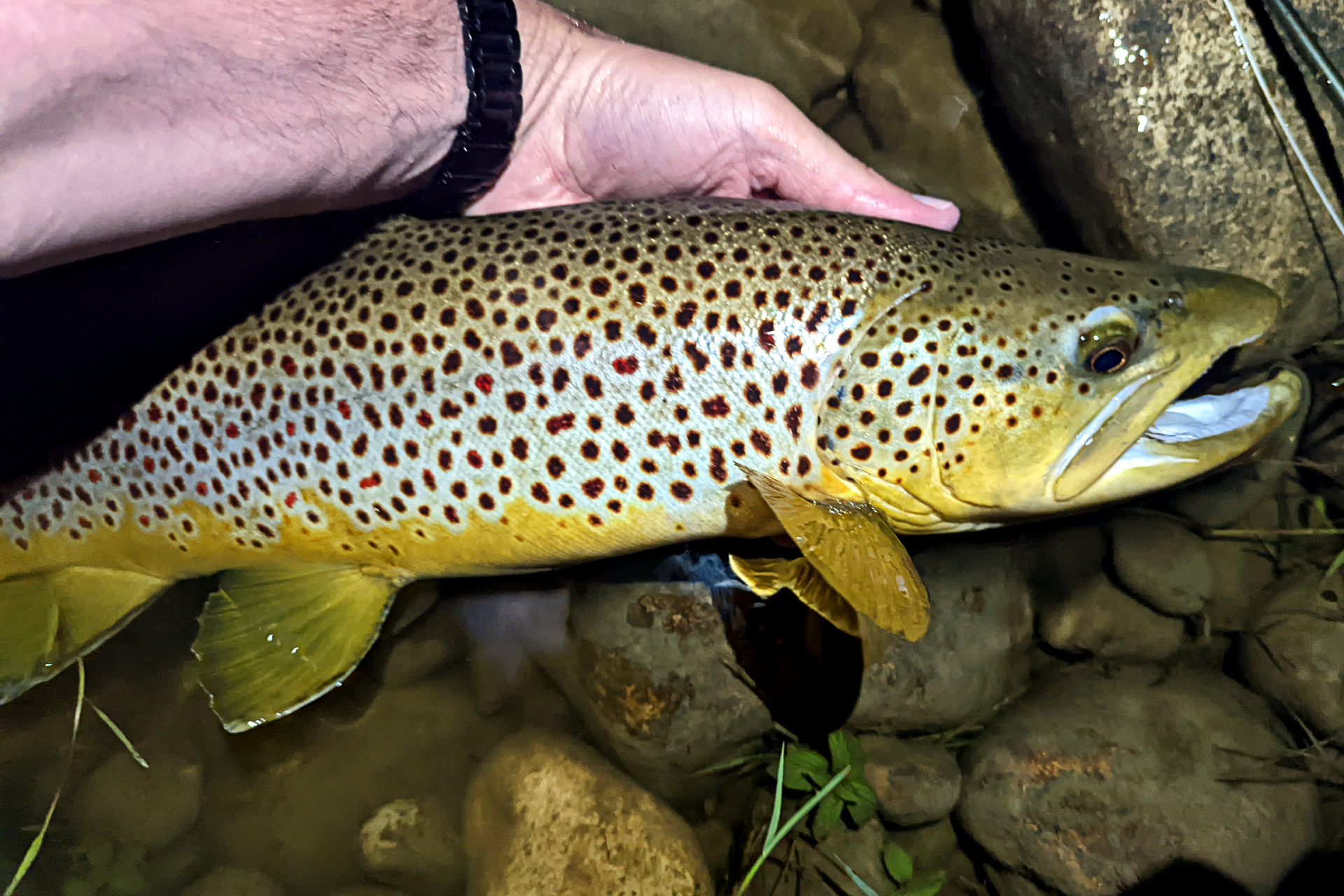
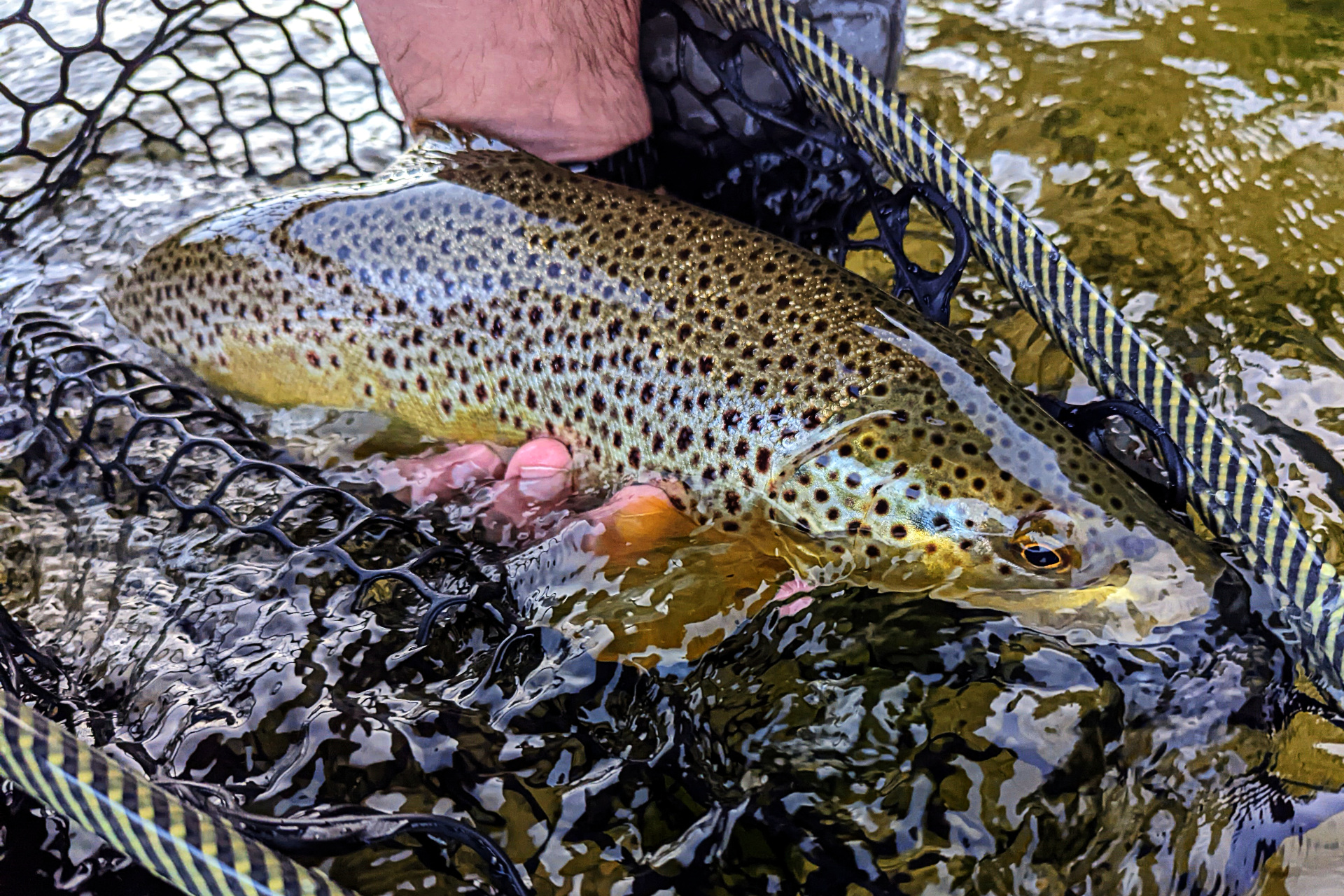
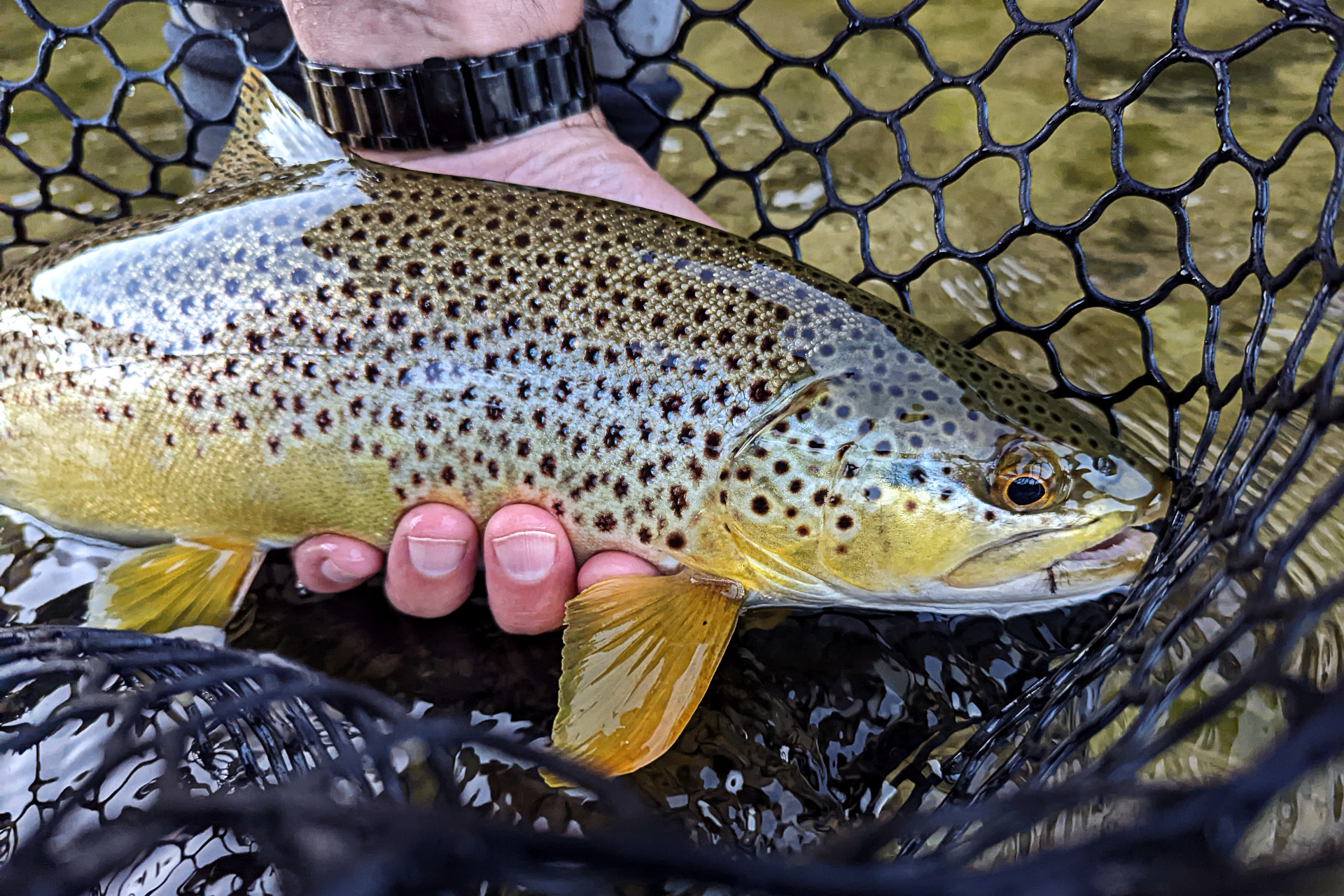
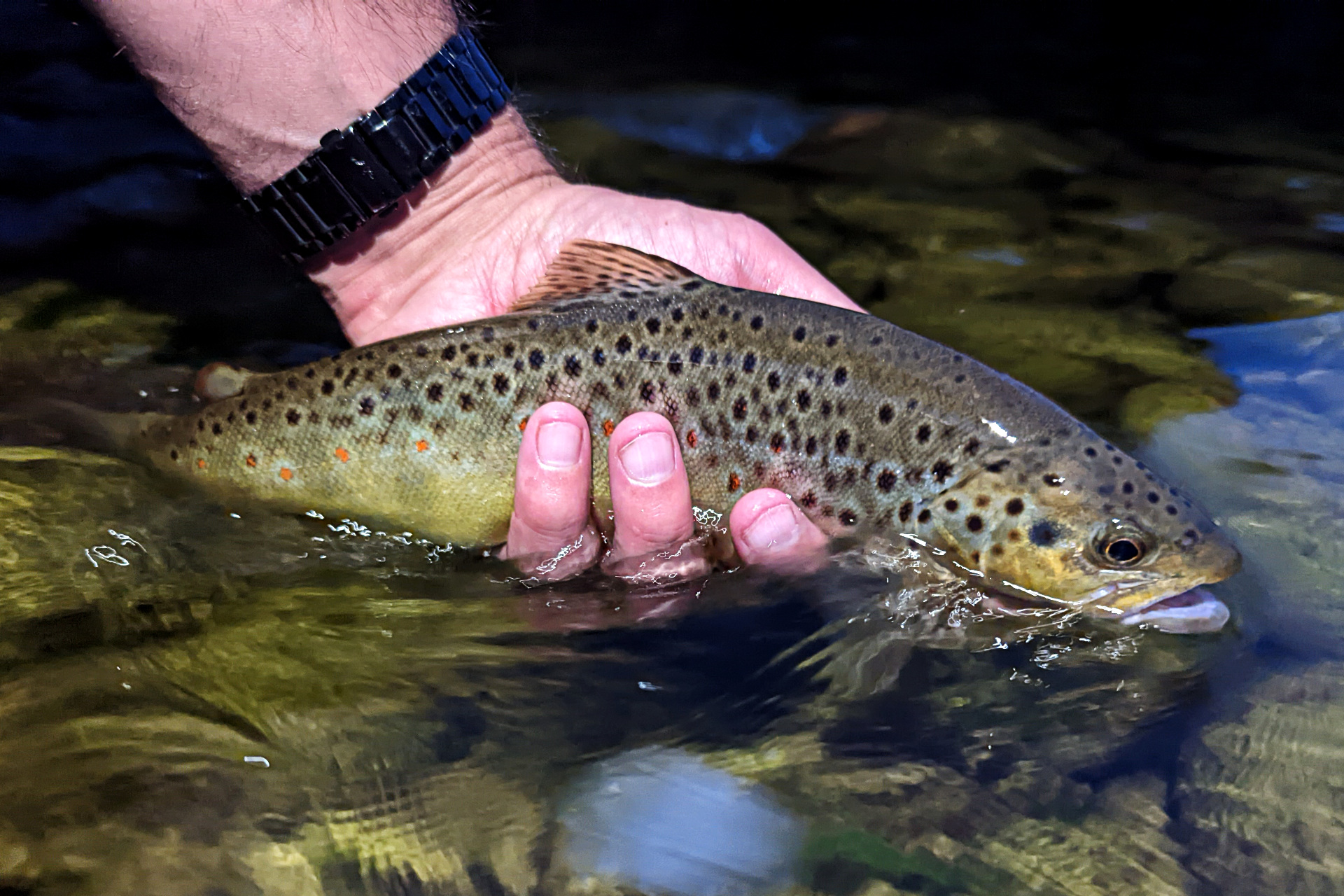
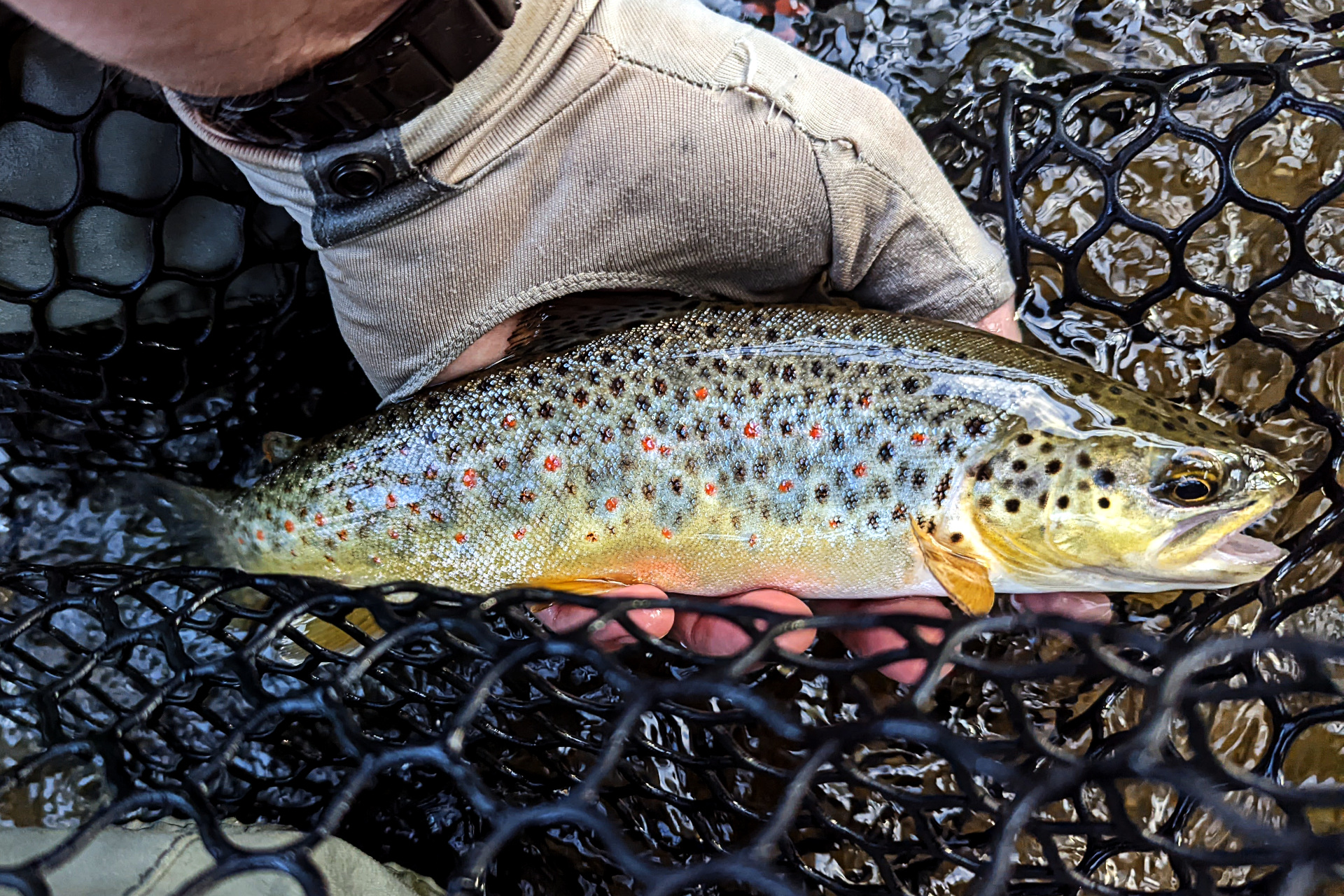
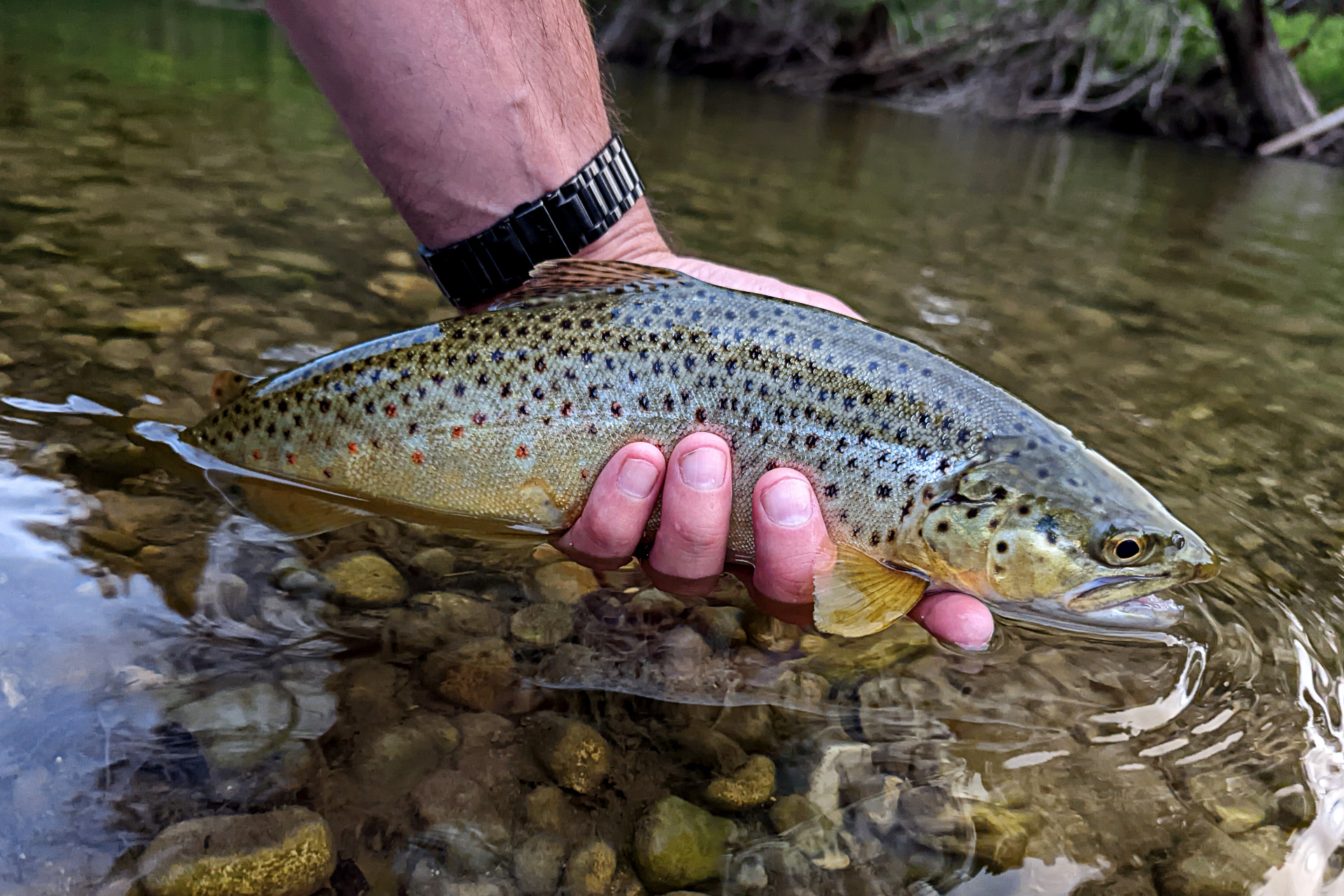
This is around the time of year that I start night fishing with big mouse or streamers – something I’ve had a lot of success with in years past. This year was a different story though. I found myself hanging around later to cast dry flies and only managed a few real short night fishing stints.
I moved a few fish during these sessions, but failed to bring any large browns to the net this year – at least, from what I can recall. The closest I got was on the AuSable river in Michigan (more on that later).
That said, I did hook up with something quite interesting one evening during the end of June. I was stripping a Gurgler upstream through some faster water. It was pitch dark on this particular night, with no moon to speak of. At once point, my fly began to feel a bit heavy – at first I thought it was simply the faster water pulling the fly under, but eventually I could feel the weight during my casts. Assuming that I had simply hooked some weeds, I swung the fly close to take peek, and it definitely looked like there was a clump of weeds hanging off the fly. When I went to grab it, my hand jumped back as I realized what was really at the end of my leader.
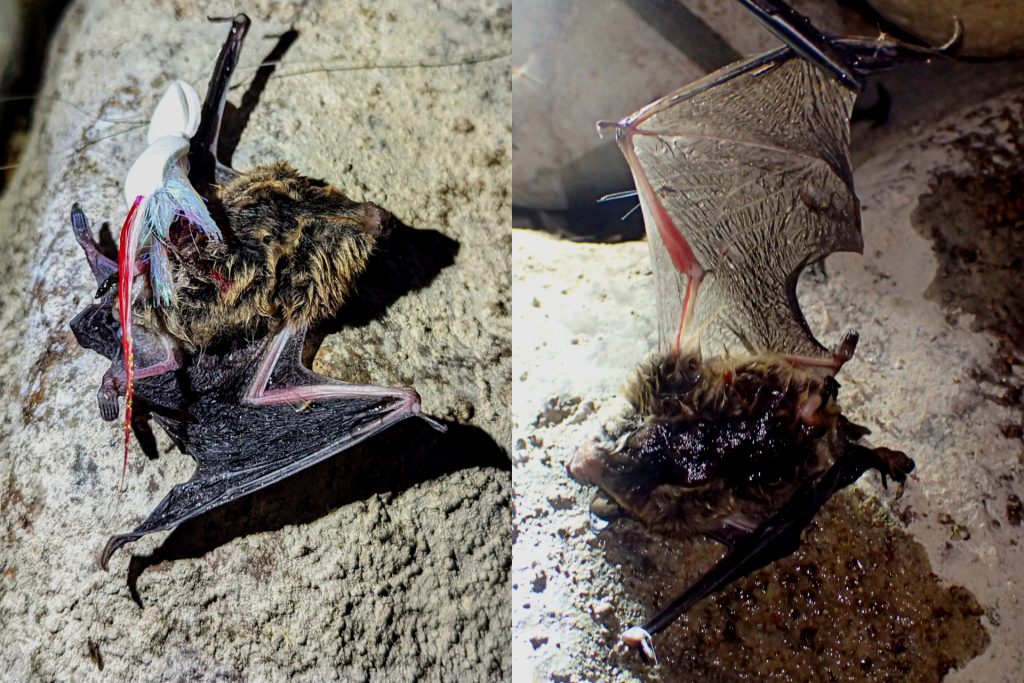
If you fish southern Ontario rivers at or past dark, you’re well aware of just how many bats we have in the area. They come out in numbers, circling the river, munching on bugs. There has been many times when they’ve flown so close to my head that I’ve had to duck.
In this particular case however, I somehow managed to hook one! Not sure if it thought my fly was food while it was gliding through the air, or if it was simply in the wrong place at the wrong time. The barbless hook slipped right out and didn’t seem to have done too much damage, but unfortunately I think I drowned the thing. I was most likely dragging it underwater up through the current for at least a few retrieves. Hard to believe I was able to continue casting with this much extra weight at the end of my line… gotta love night fishing!
Early Summer: AuSable River Trip
The main theme for this summer was drought. What started as excellent water levels, quickly diminished down to some of the lowest levels I’ve ever seen in our rivers. As a result, for most of July, I simply took a break from fishing entirely.
At the end of July however, my wife and I took a week long trip to northern Michigan – Grayling specifically – where I’d spend a good amount of timing fishing the holy waters of the AuSable river. I’ve spent a significant amount of time on this river in years past, but hadn’t fished it for quite a while due to COVID restrictions.
I didn’t expect the fishing on the AuSable to be great at this time of year either. The water levels were also much lower than normal and there were no major hatches to speak of (aside from Tricos). Between the water level, tiny bugs and the fact that the holy waters section of the AuSable is extremely technical, hooking into a few small browns would be a real accomplishment.
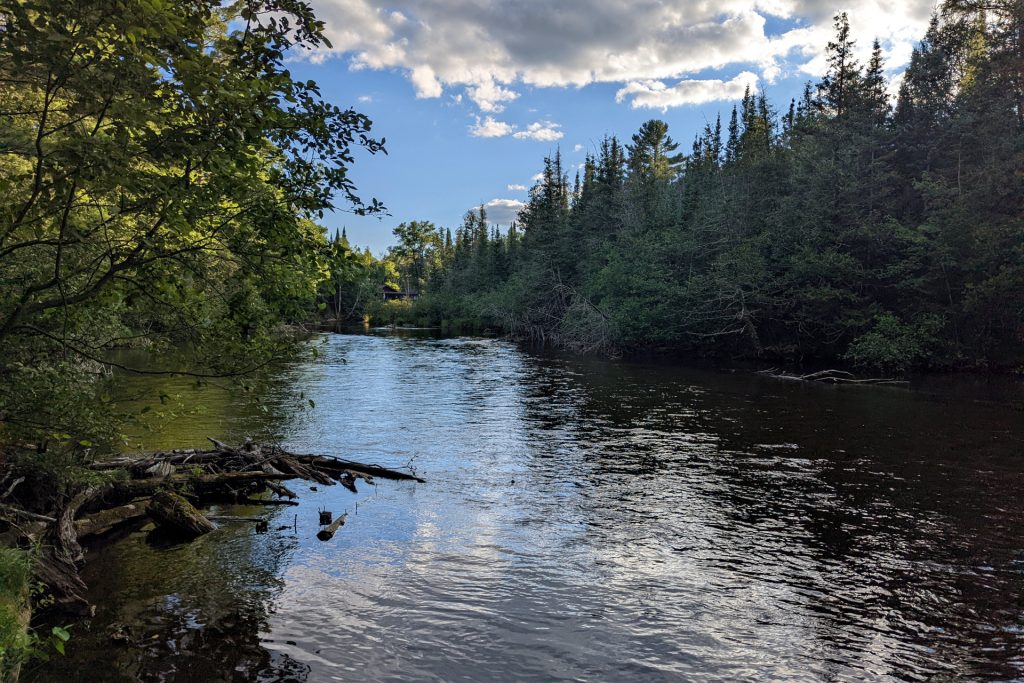
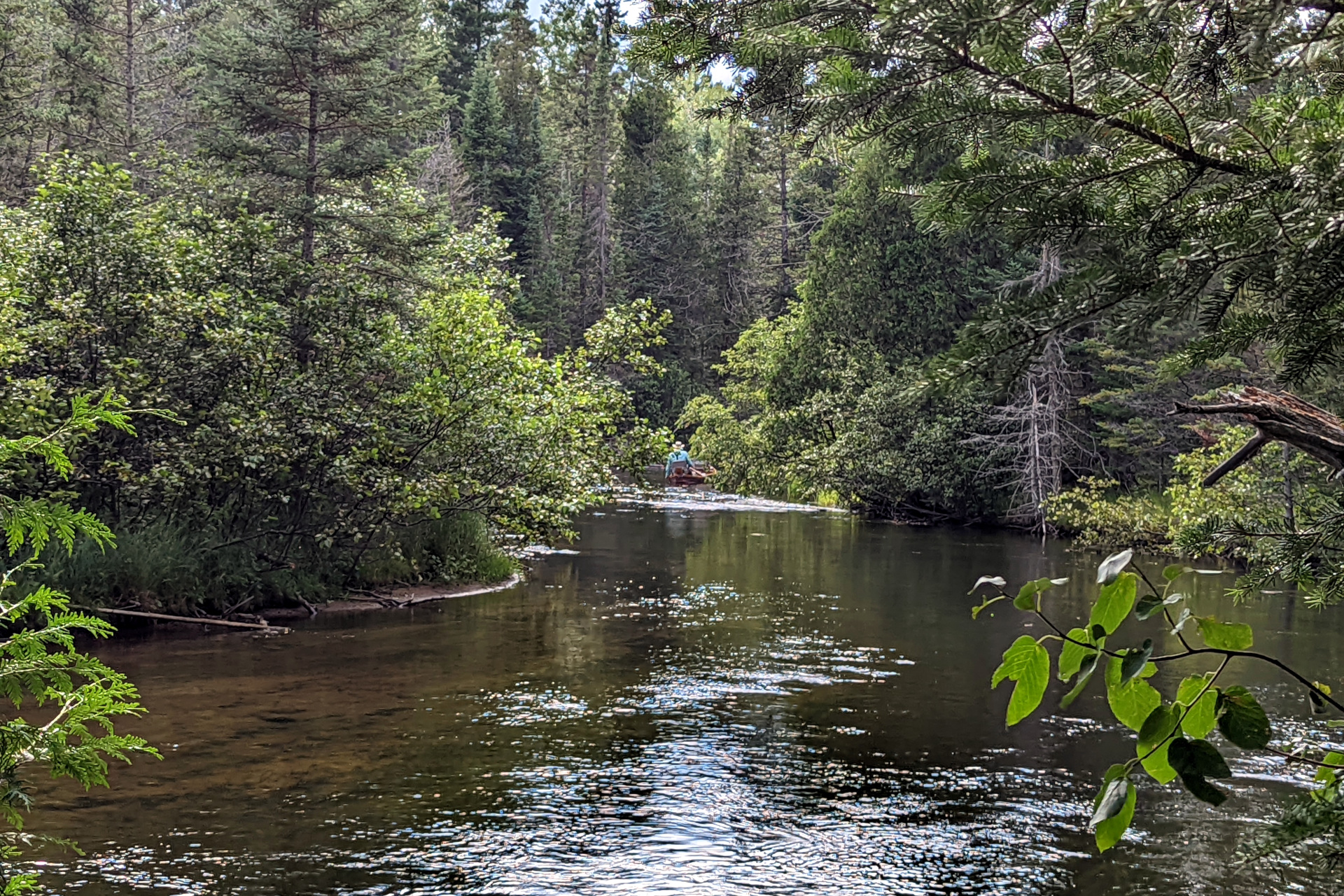
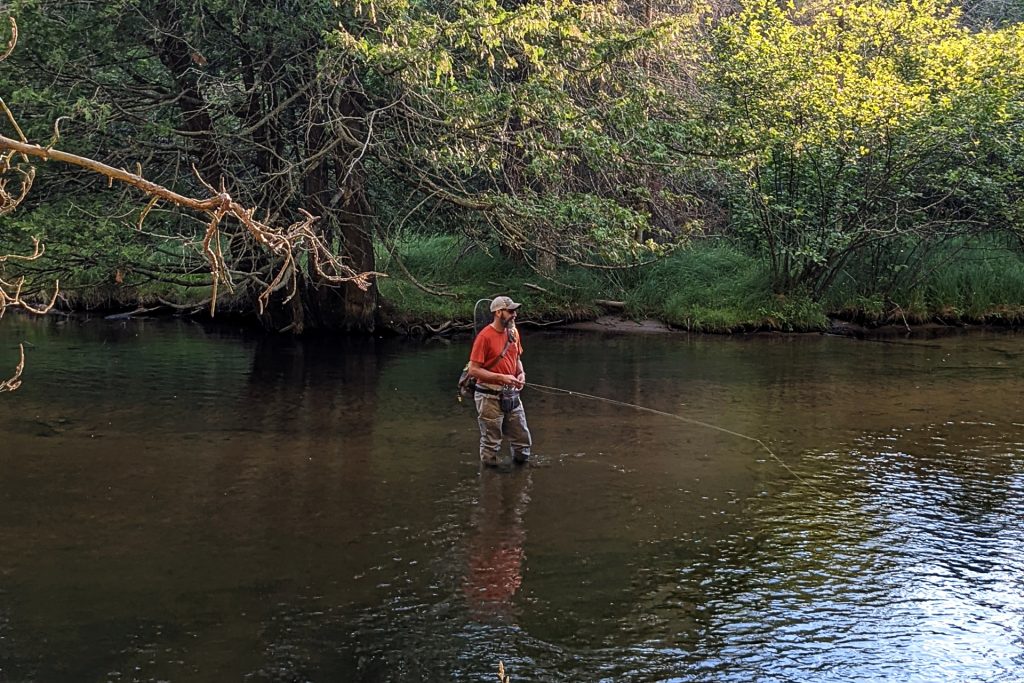
In addition to the major Trico hatches each morning, there were occasionally some equally small BWO and the odd sporadic white miller hatch in the evening. Of course, small hatches aside, there was still the promise of hooking into a trophy brown after dark. This river is pretty much the birthplace of night fishing for big browns, after all.
The following are most of the flies I tied and fished on this trip (missing is the Tricos, which I already had a plentiful supply of). All caught trout, albeit not large trout – except the gurglers, which produced about a half dozen blow-ups by huge browns at night. Only one of those resulted in a hook-up, which unfortunately ended shortly thereafter when the crafty brown wrapped itself around a log at the bottom of the pool.
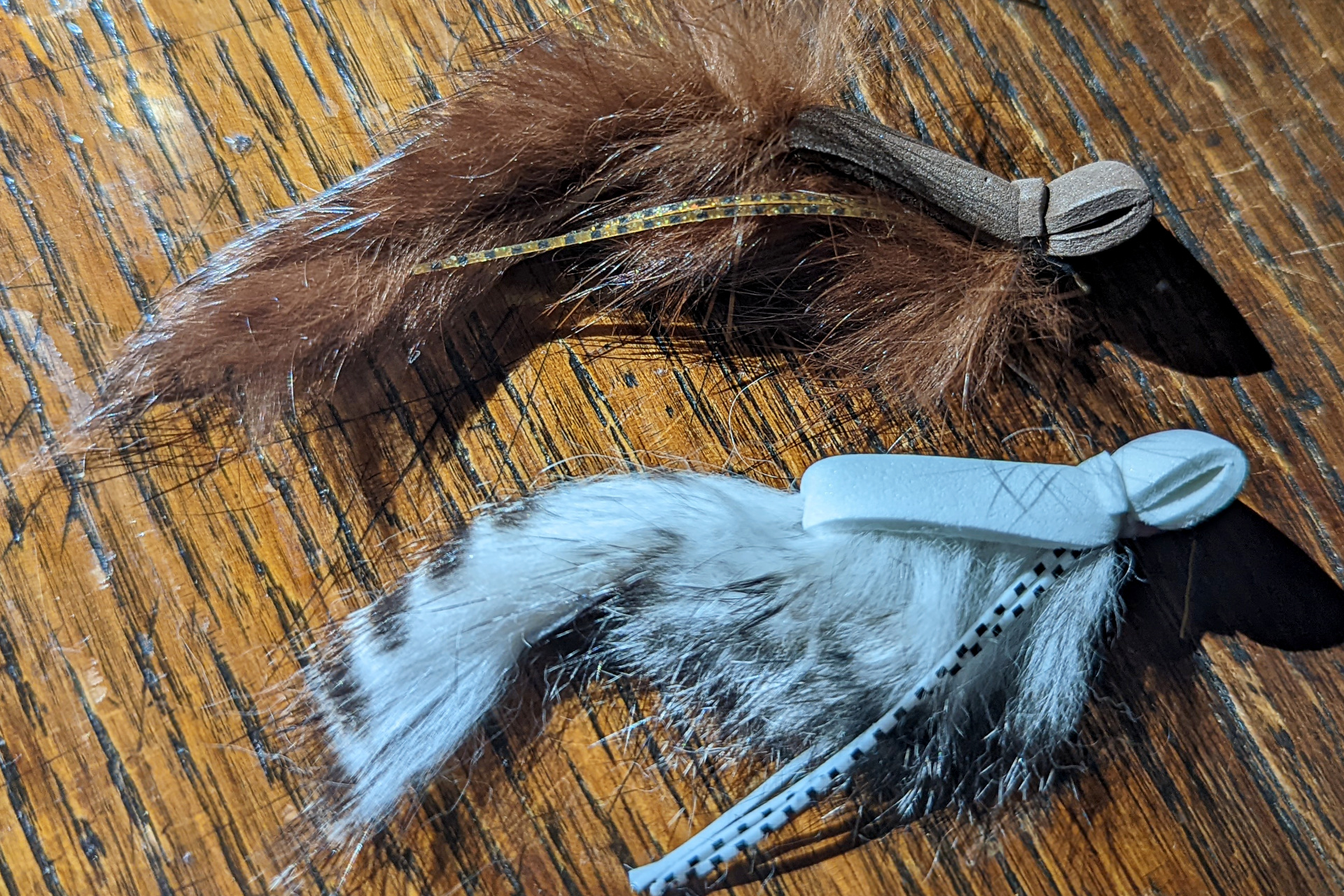
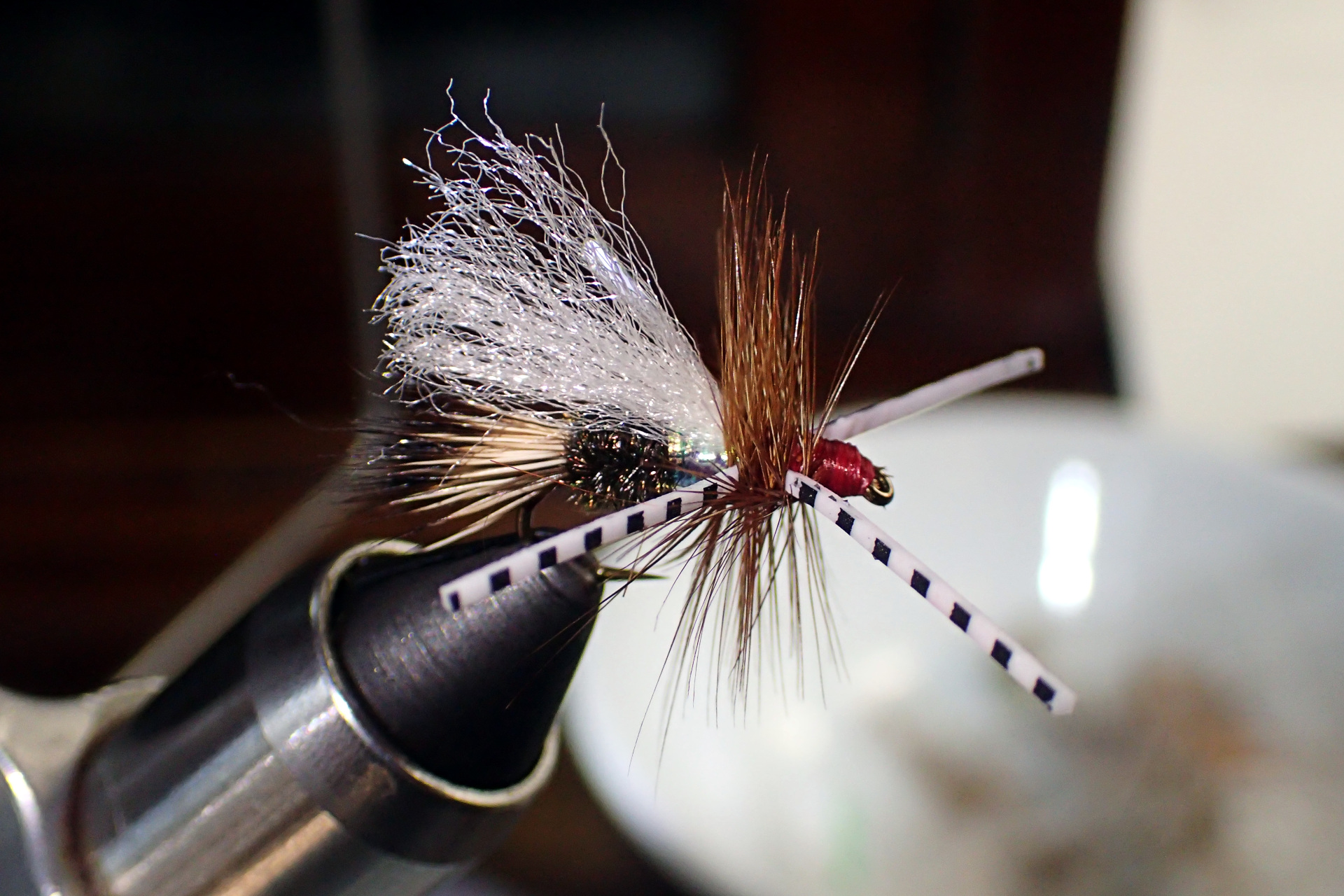
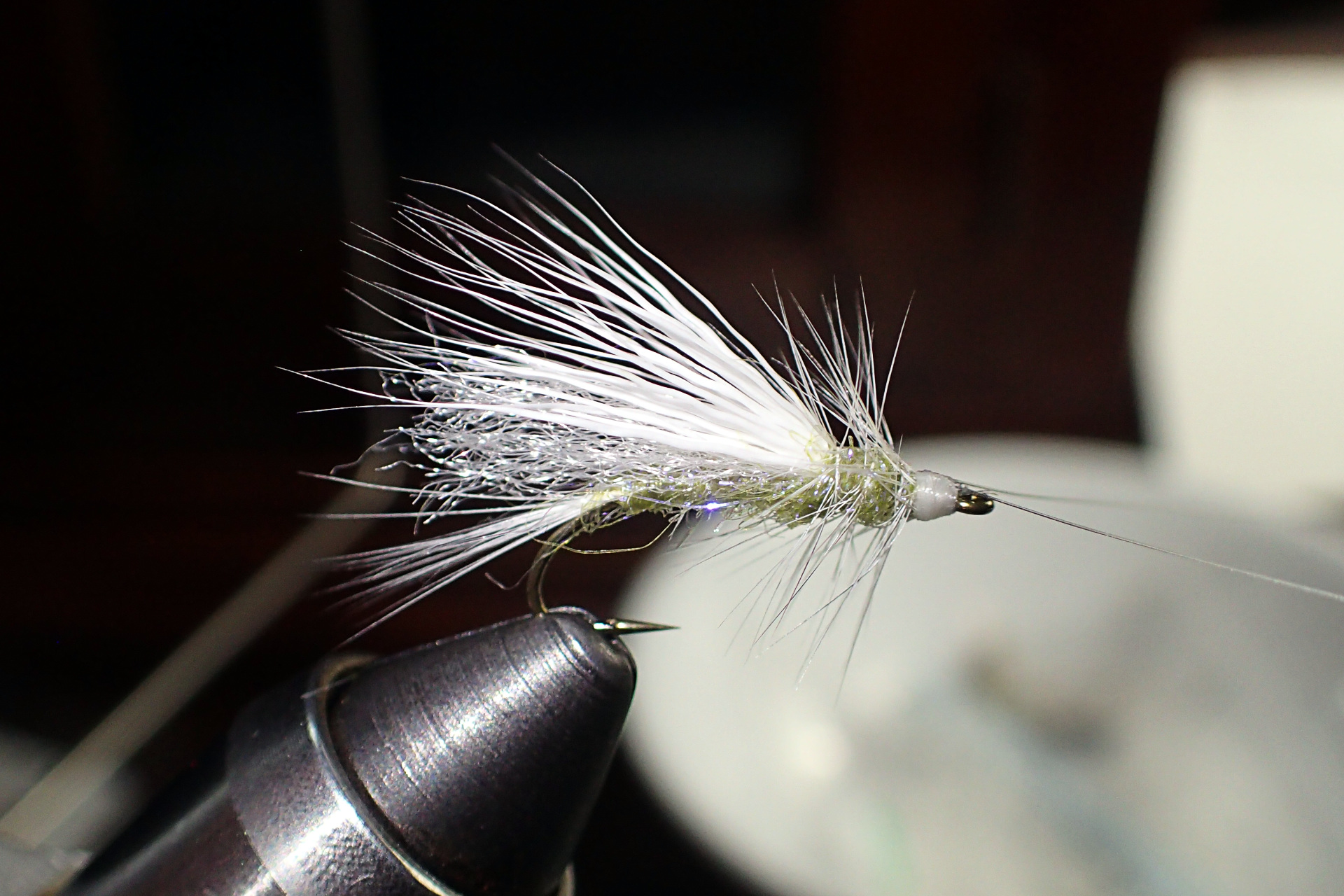
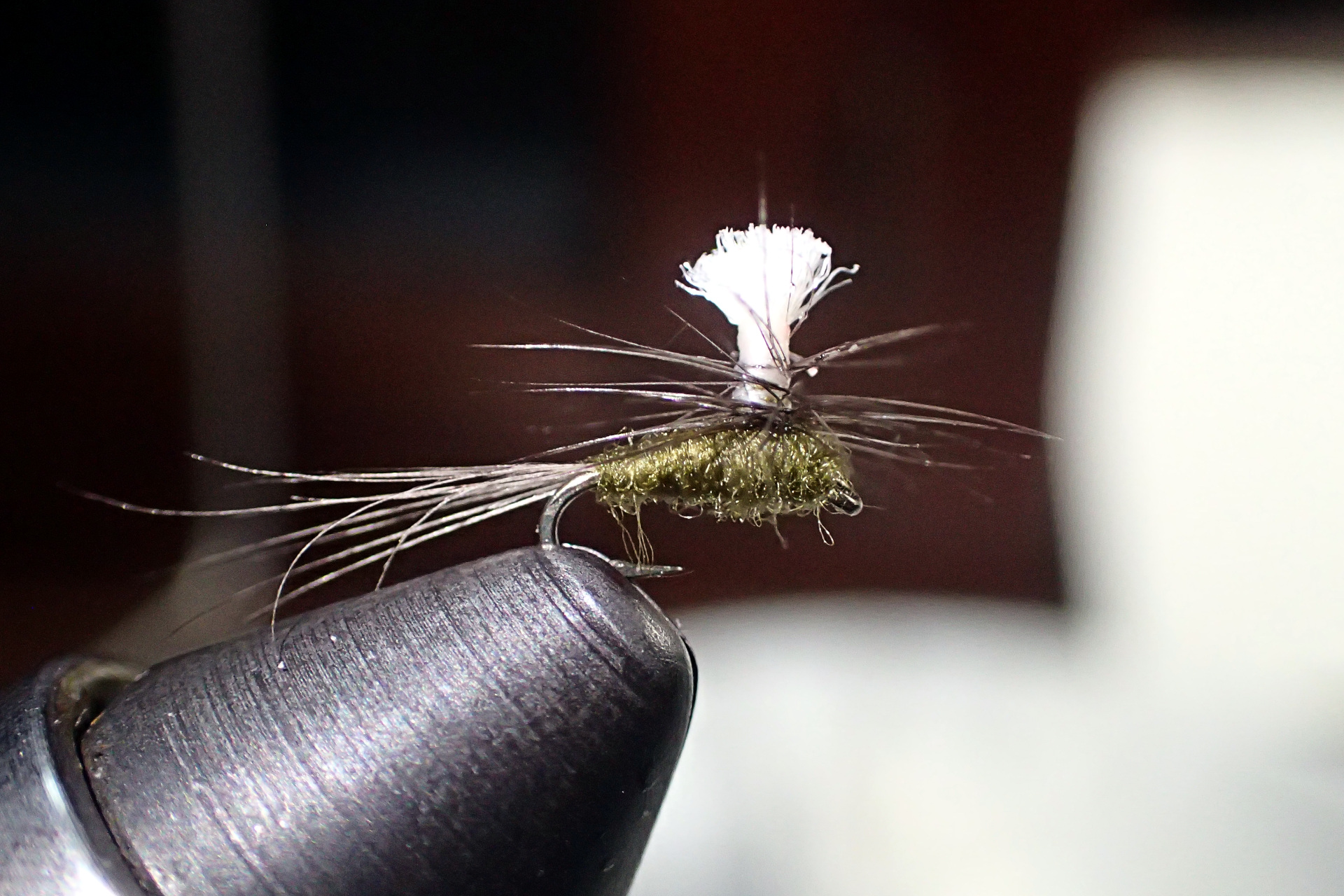
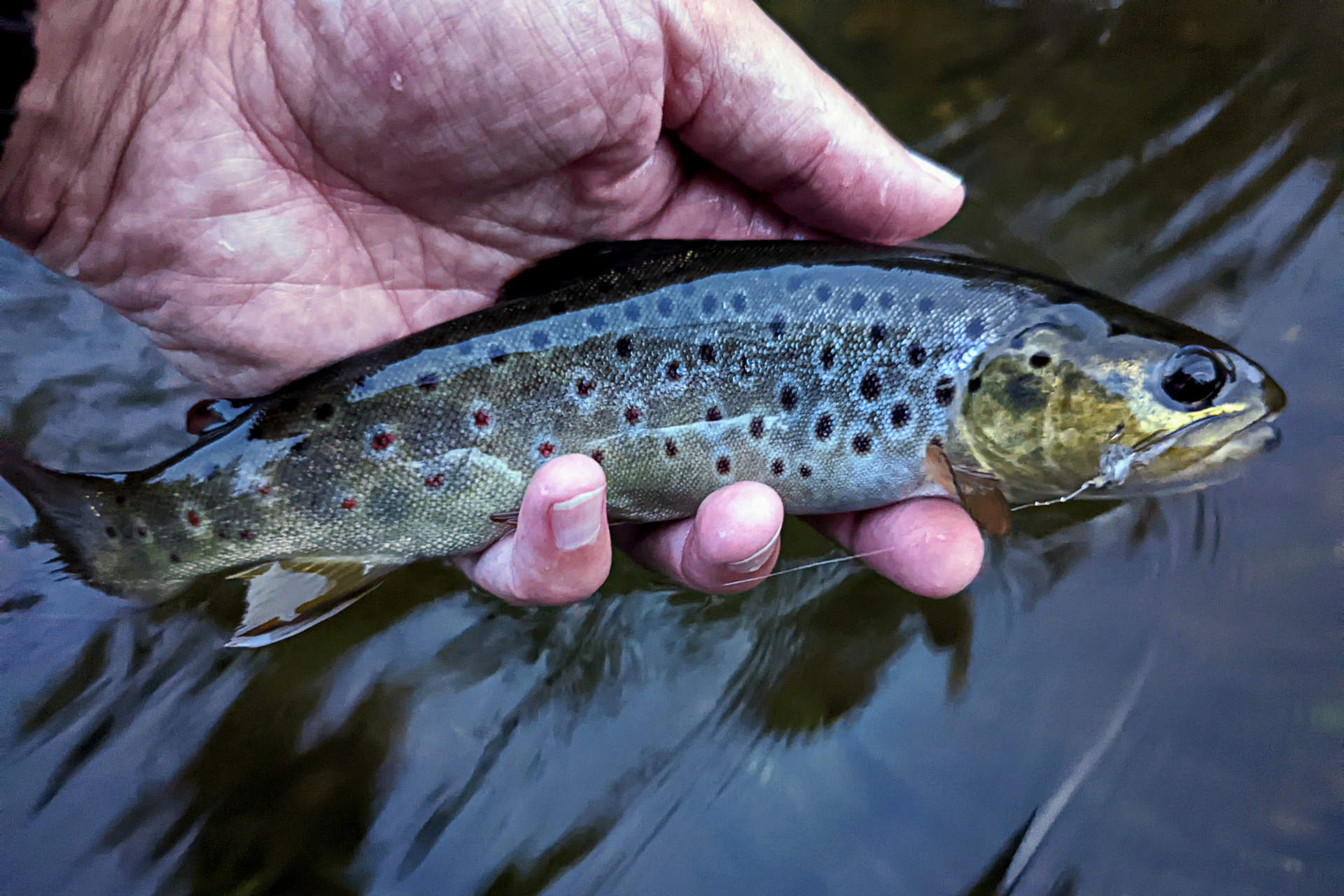
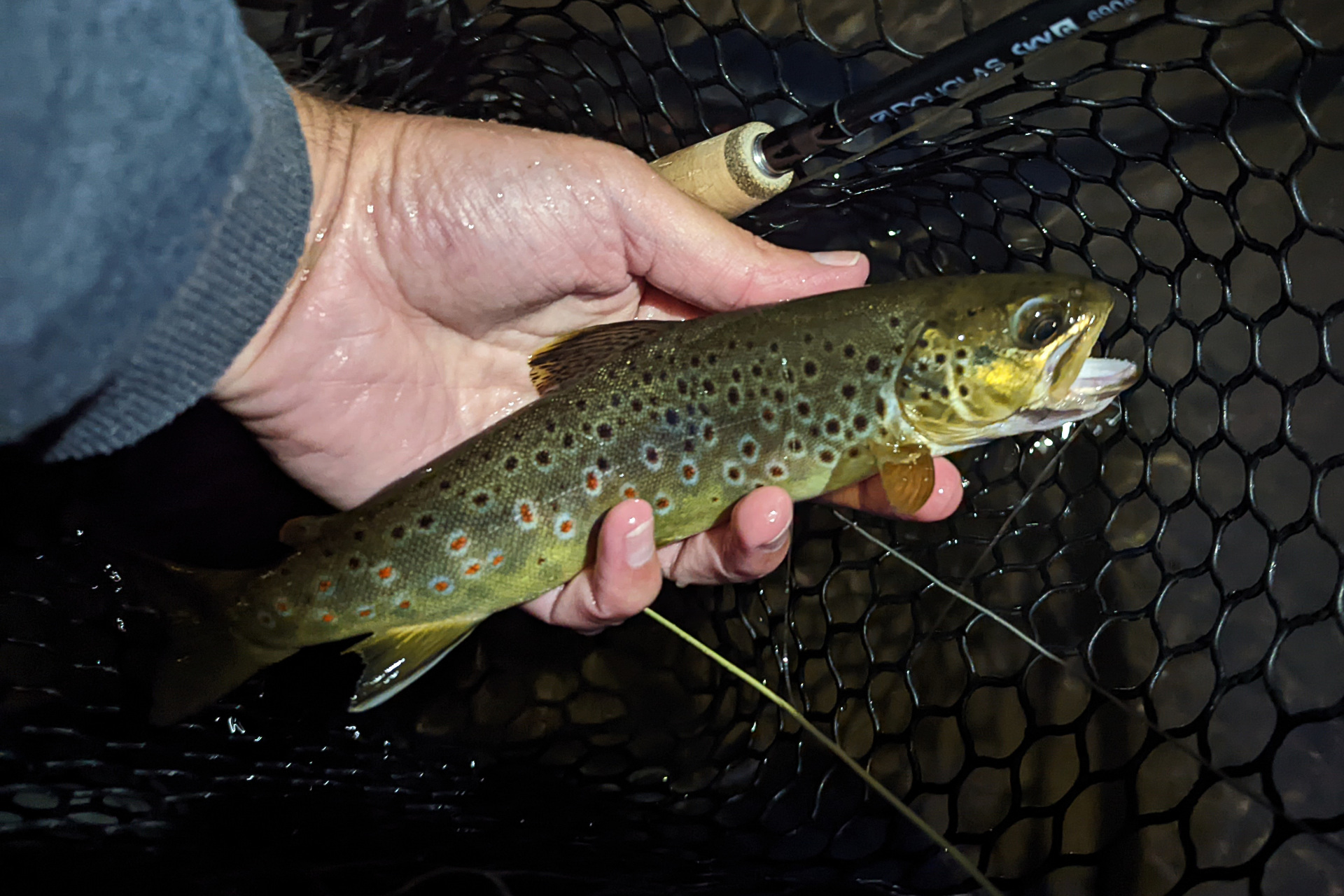
The Patriot Skunk was reserved for float days. I brought my Outcast Fish Cat pontoon along on this trip and used it on two separate occasions. It was my first time floating the AuSable and the fine folks at Gates AuSable fly shop gave me some ideas for some floats. Also worth mentioning is the new Douglas Sky G 6 weight I purchased from Gates, which can be seen in the second picture above. This was to replace the Orvis 6 weight that I broke on my Algonquin trip early in the season. I spent a good 30+ minutes casting about 8 different rods at the shop – and it was very obvious that the Sky G was the rod for me. It had the lightest swing weight (feel wise), yet I easily cast the tightest and furthest loops with it.
Anyway, the pontoon floats were an unbelievable amount of fun. I’ve had the boat for years, but had only used it on lakes and ponds up until now. It’s infinitely more enjoyable on moving water though – so much so, that this new way to cover water would continue back home in southern Ontario (more on that in the next section).
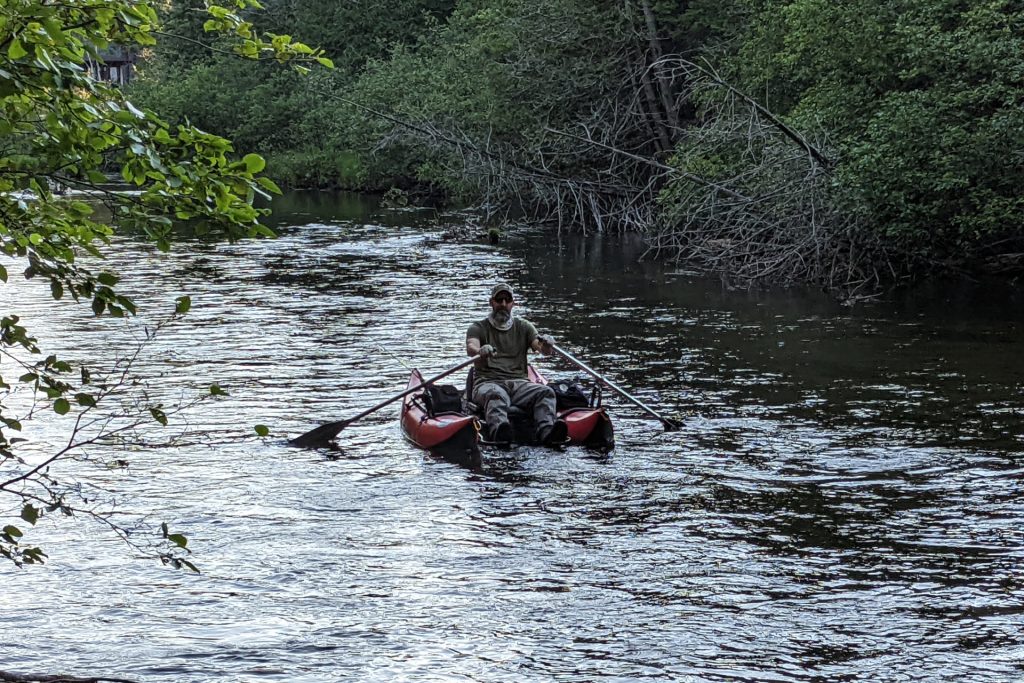
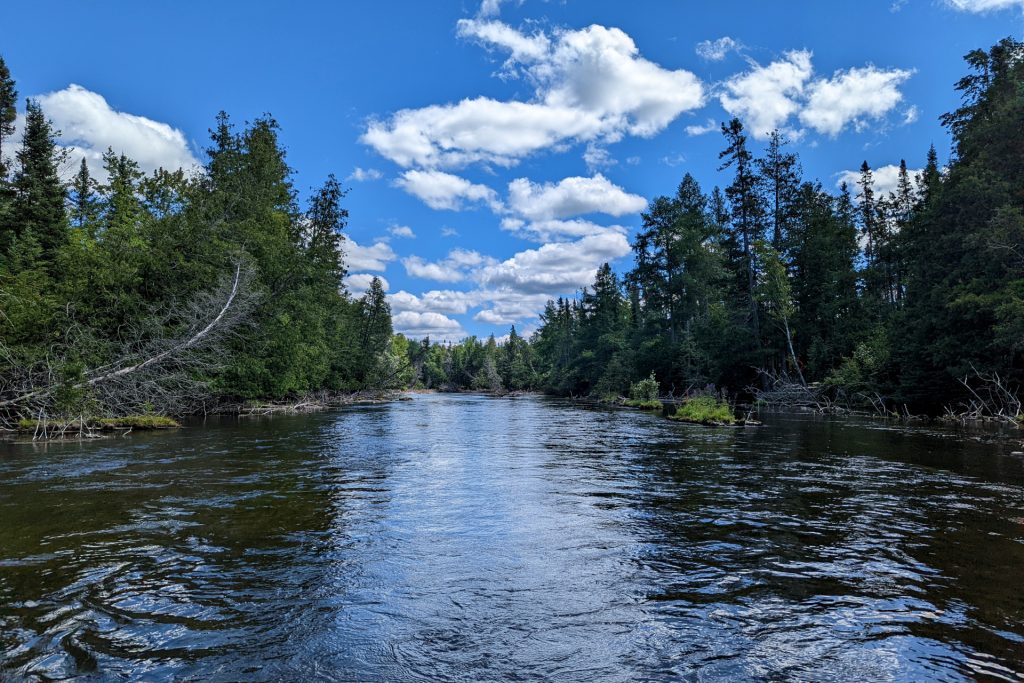
Late Summer: Floating to find Water
Back home after my trip, I was faced with the dilemma of dealing with the water levels that were continuing to drop on our home waters. Thankfully, water temperatures remained fairly good on most of the rivers, it was just finding water that was the difficult part.
Equipped with my new found joy of drifting in the pontoon, my buddy Steve and I (yes, the two Steves) decided to start putting our pontoons to use to gain access to some deeper and less fished water.
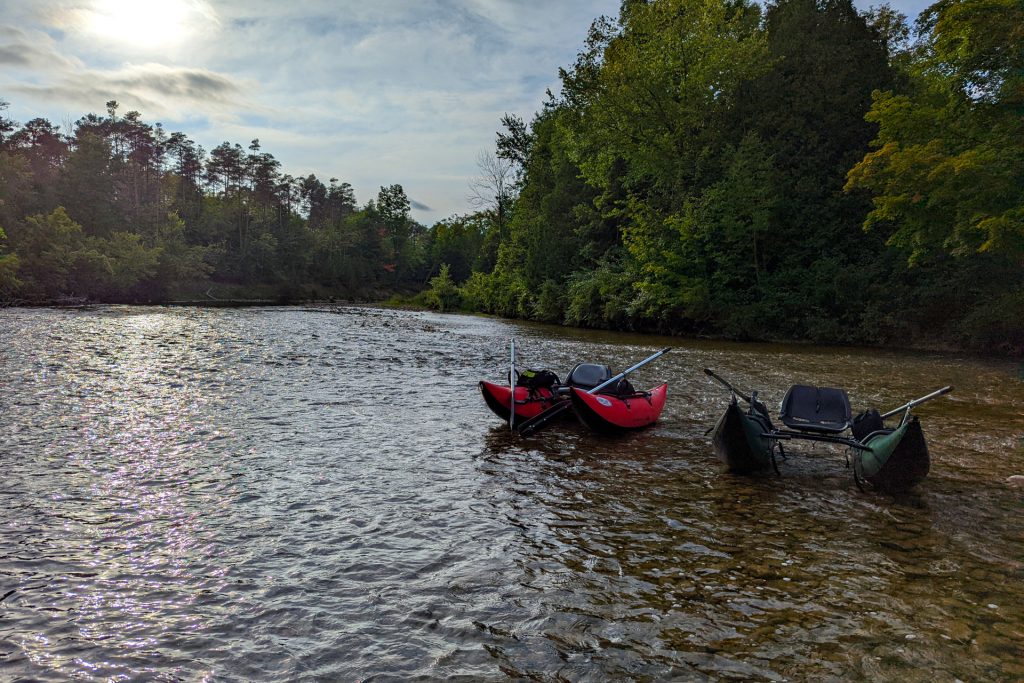
We got into some very deep and nice water on some of these floats. It took some time to learn the new water, but we found fish – even a few really nice fish. However, while both of us had visible strikes from some huge browns on a few different occasions, neither of us managed to bring the larger browns to the net. Steve lost a really nice brown after a good fight and I botched a couple big takes (or was snubbed at the last second).
We floated many nights during the hex hatch and it was really just that magical time of day (an hour or 30 minutes before dark) when the fishing really picked up. We worked on timing our floats to put is in the better spots at that time, but it means having to float down to the take out in the dark – which wasn’t too bad once we learned the water.
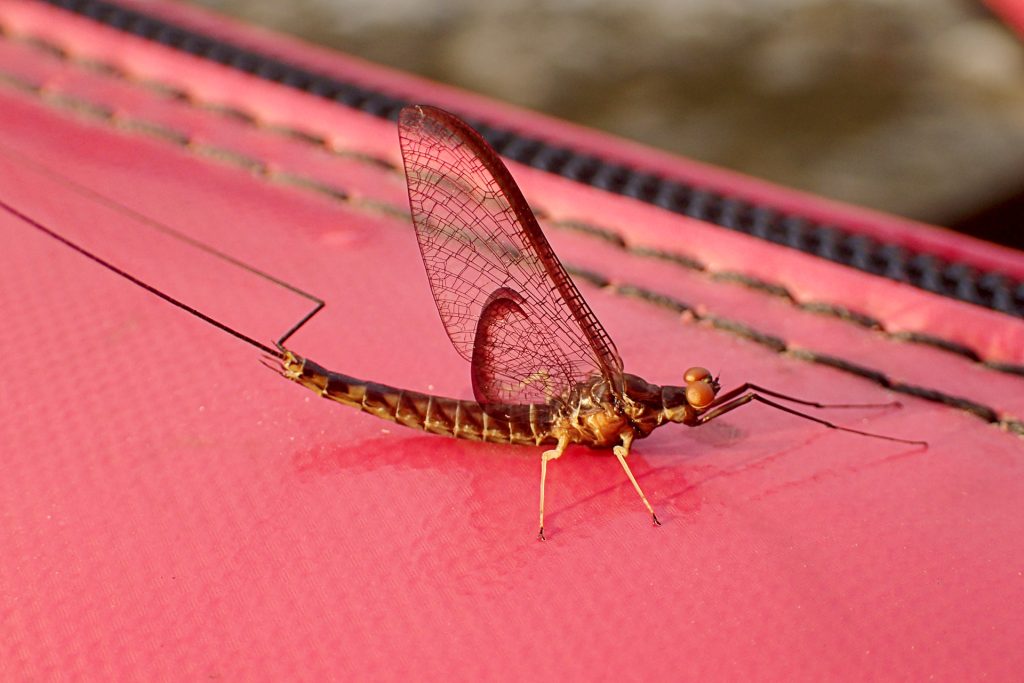
The duns (especially the males) are very dark and I often used the below simple tie to fish them, especially in faster moving water. I have some other patterns that are prettier and more believable when needed, but often this will get the job done, since trout can become fairly unselective when they’re actively feeding on this big bugs.
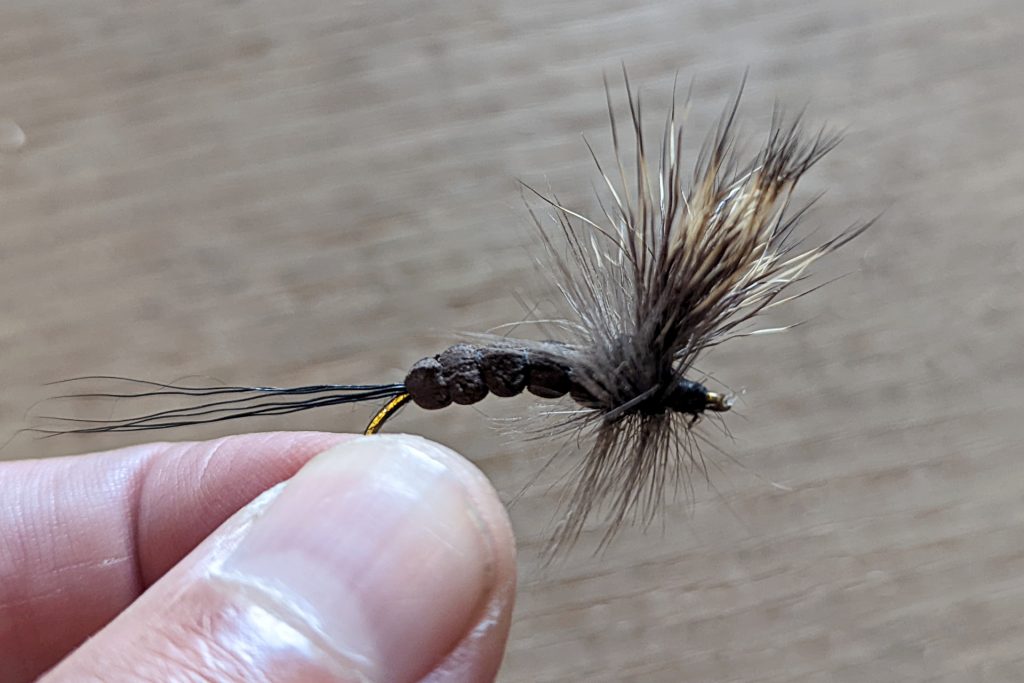
On one evening when the hexes were active, I had a huge brown blow up on my fly. It jumped clear out of the water and smacked itself down right on top of the fly – but missed or denied me at the last moment. It was a smaller rainbow (again) that took my hex a few casts later in the same pool.
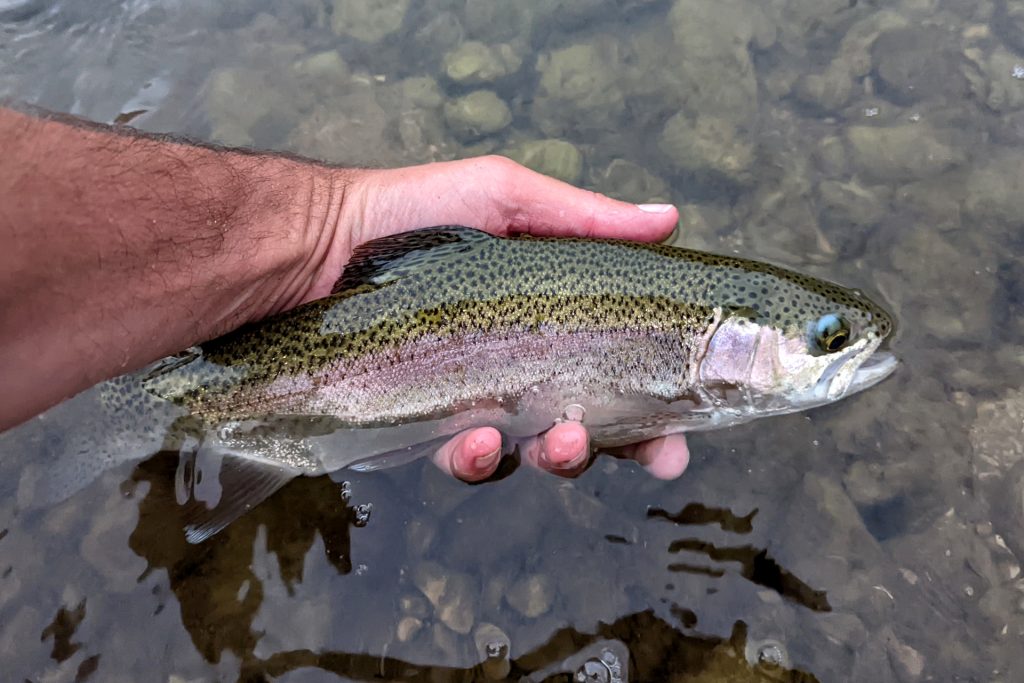
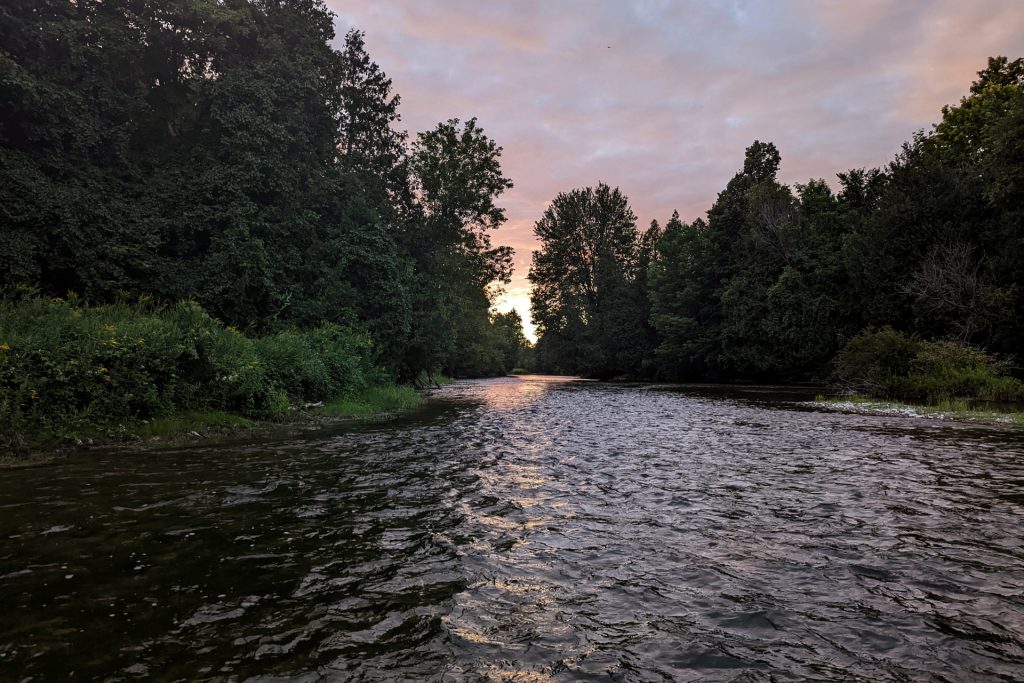
Outside of trout, I once again failed to spend any significant time fishing smallmouth bass this year. It’s totally ironic that, growing up in an area teeming with bass and devoid of trout, I have to drive quite the distance to fishable bass water. I did experiment with a solo bass float on one occasion though – dropping my pontoon off at one access point, then driving to the next access point and biking back up to my boat. It was a bit of a workout in the blistering heat that accompanies summer bass, but it was totally doable.
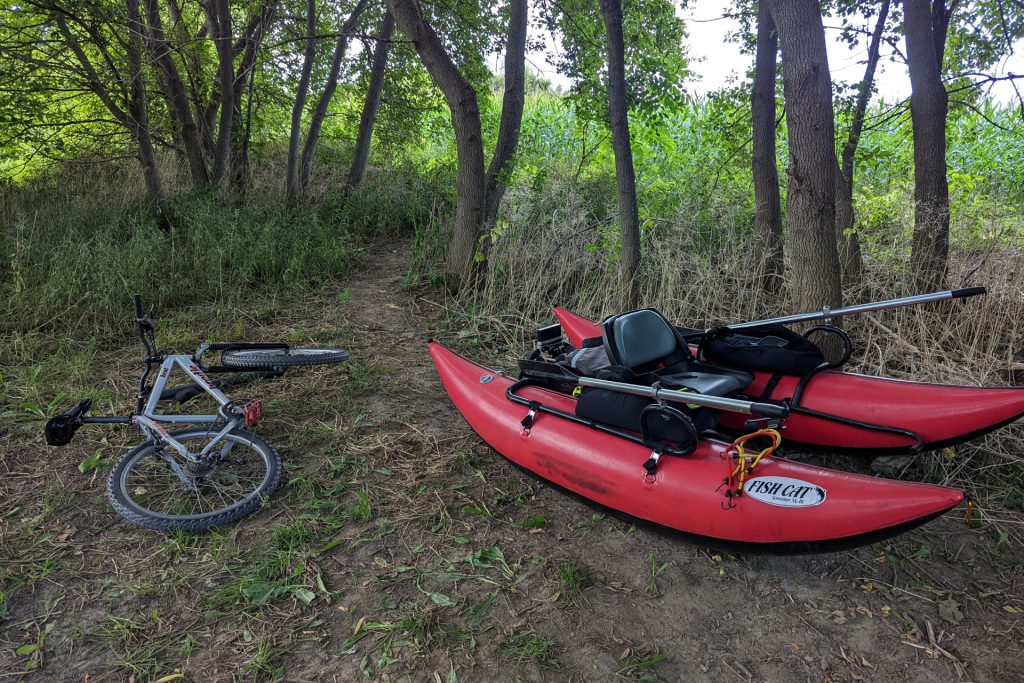
Unfortunately, I hooked into a total of a single small bass that day – but saw some excellent new water.
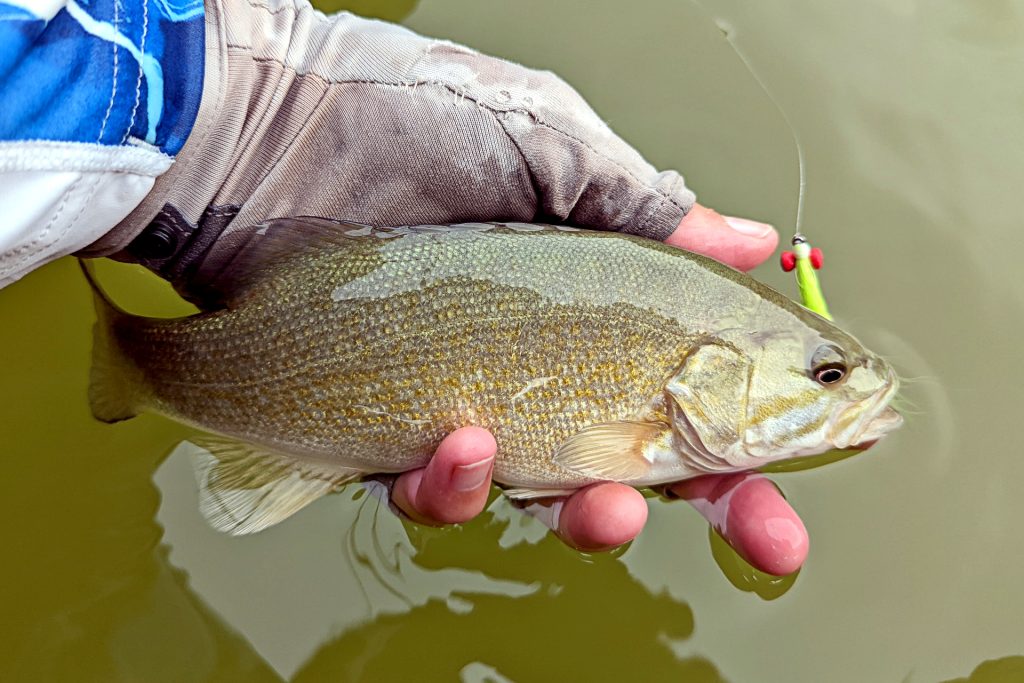
Late Season: Back to the Backcountry
With hatches winding down and choices to make on how to spend the end of my trout season, I decided to spend it once again paddling for a week in the back country.
I had once again spent countless hours researching and scouring maps (and considering water levels), trying to make a decision on a late September backcountry brookie trip. I was also in the market for a new canoe and after considering some solo canoes as well as some smaller tandem prospector style canoes – I landed on a new Nova Craft Prospector 15 in Blue Steel. This canoe is not only plenty light for long portages (45 lbs), but much more versatile and stable for fishing than most of the solo boats. Though most of my trips would be solo, it gave me the option of bring along another person.
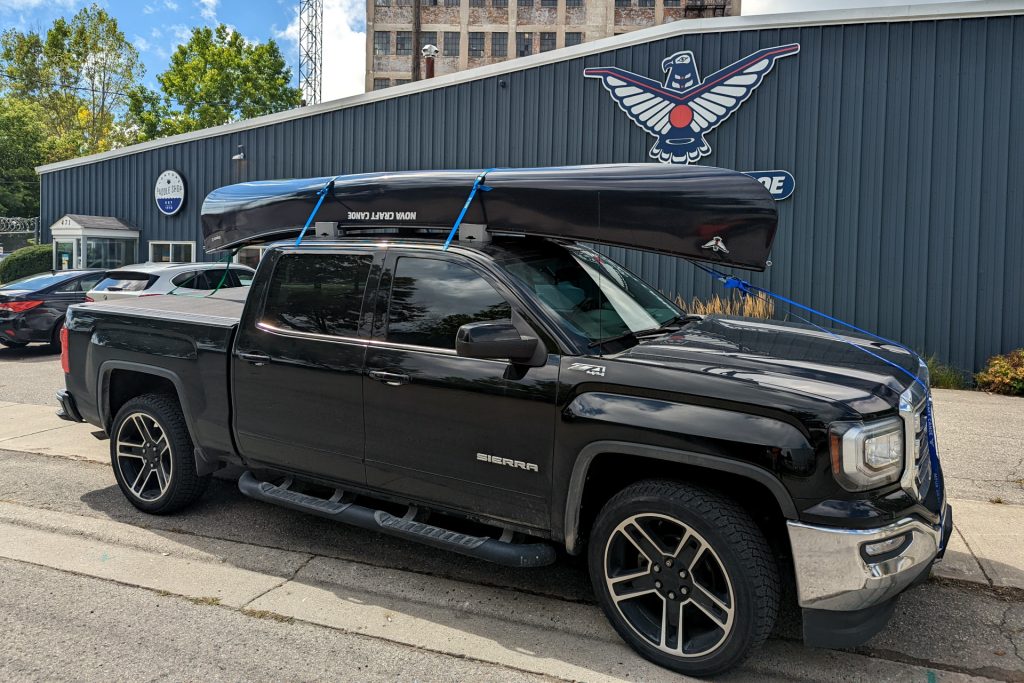
With new canoe in hand, I pieced together a 7 day trip that would avoid low water and hopefully get me into some brookies for the end of the season. I’ll be posting a separate update on that (to be linked here later) in the coming days.
I think that just about does it for this year’s trout season. Definitely an eventful one, with 13 days spent solo in the backcountry, 7 days in upper Michigan and lots of exploring new water and float trips. All that didn’t really equate to my most successful season of fishing – that is, if you count success by the number and size of trout caught – which I don’t.
There’s still some opportunity for fall Bass and Steelhead – let’s see if I take manage to take advantage of it. In the meantime, I’m already starting to dream up some trips for next year and hoping for a more water in 2023.

Great read! Glad to hear about the backcountry trips too!
Thanks Pat!